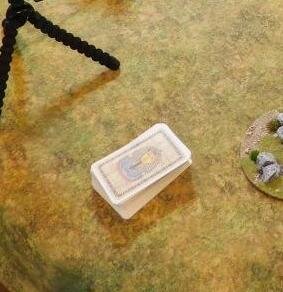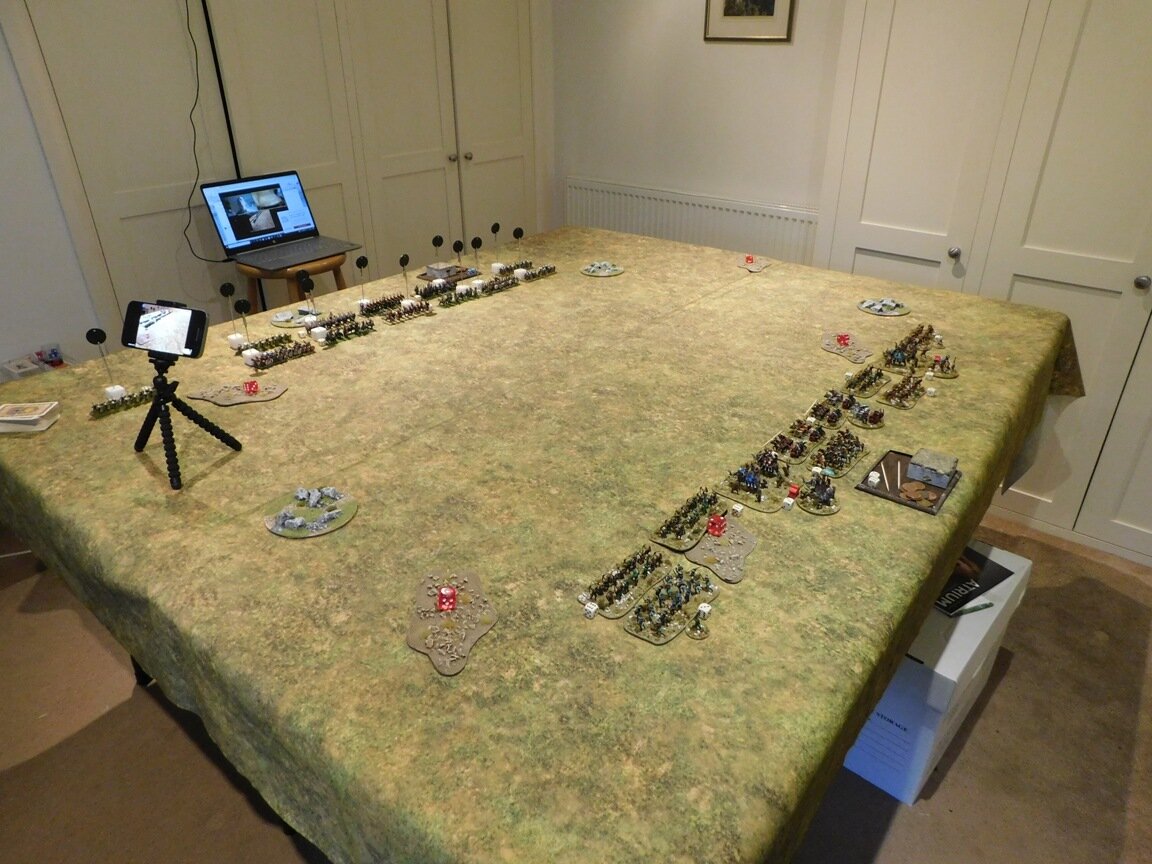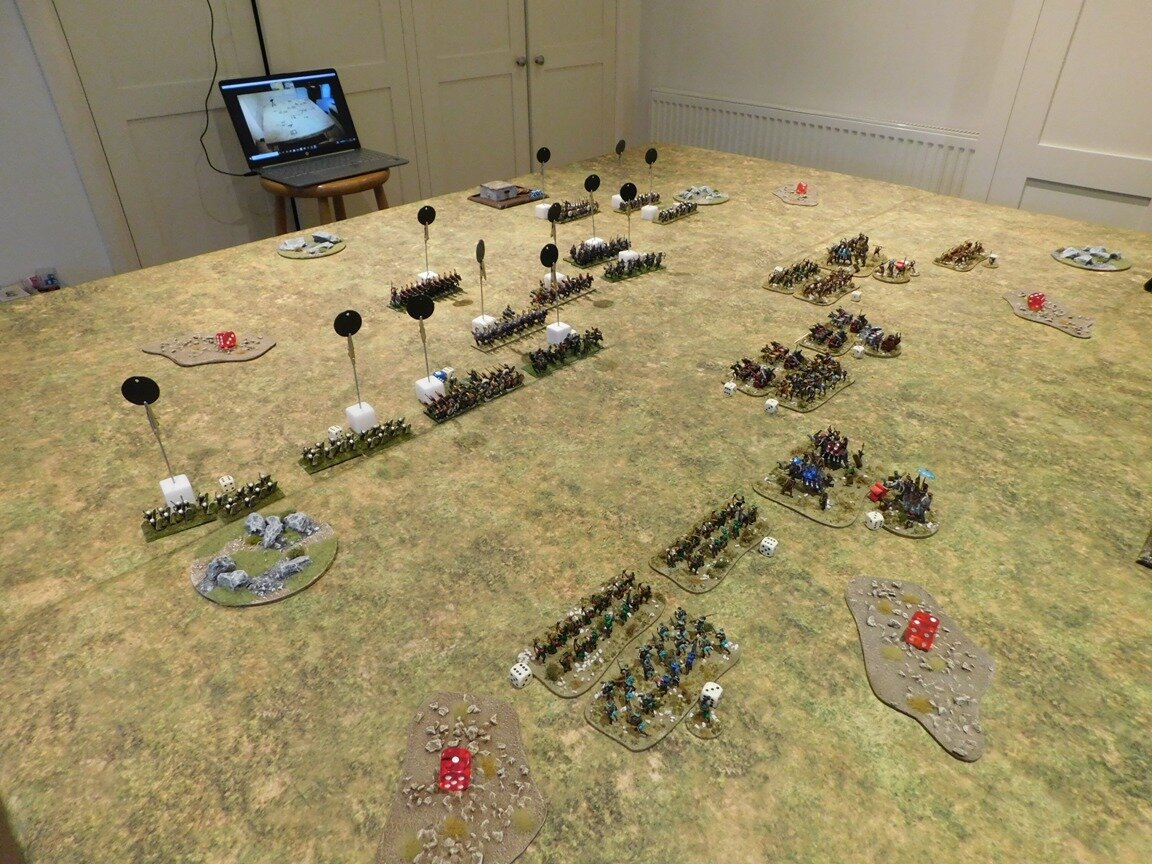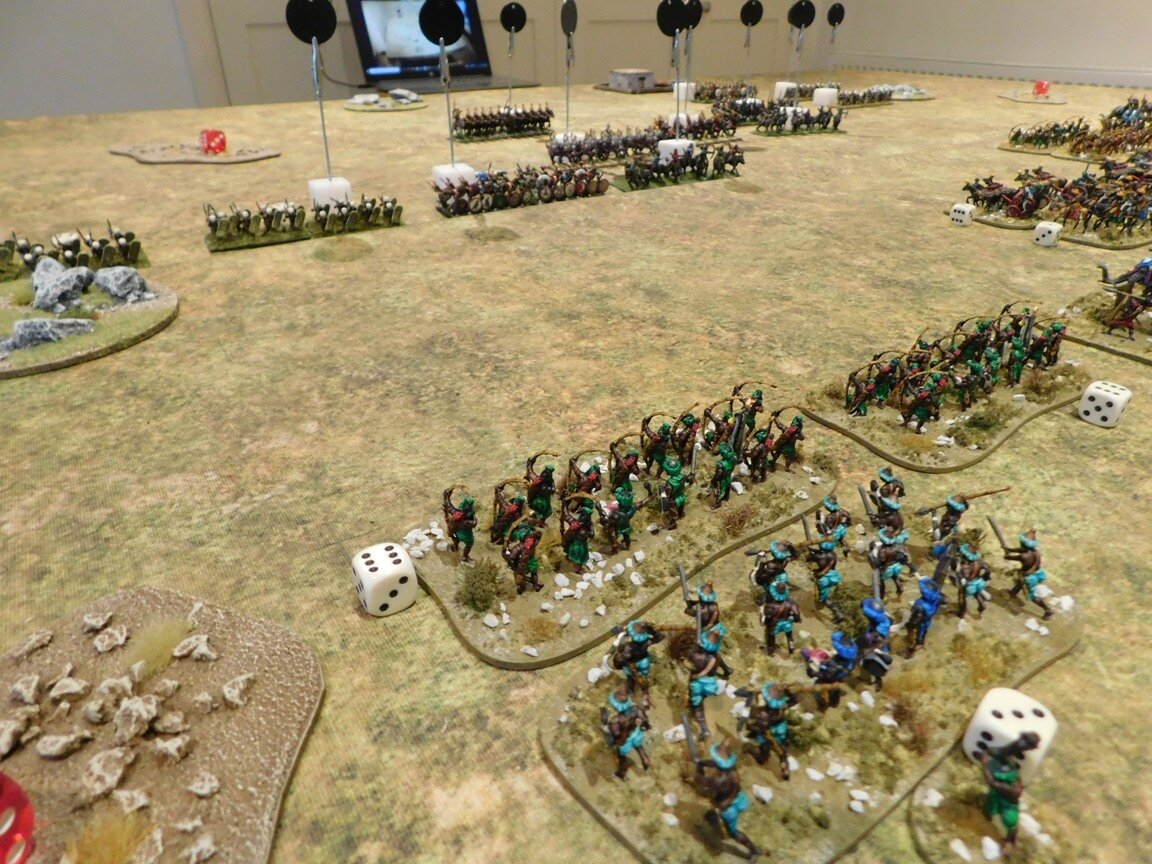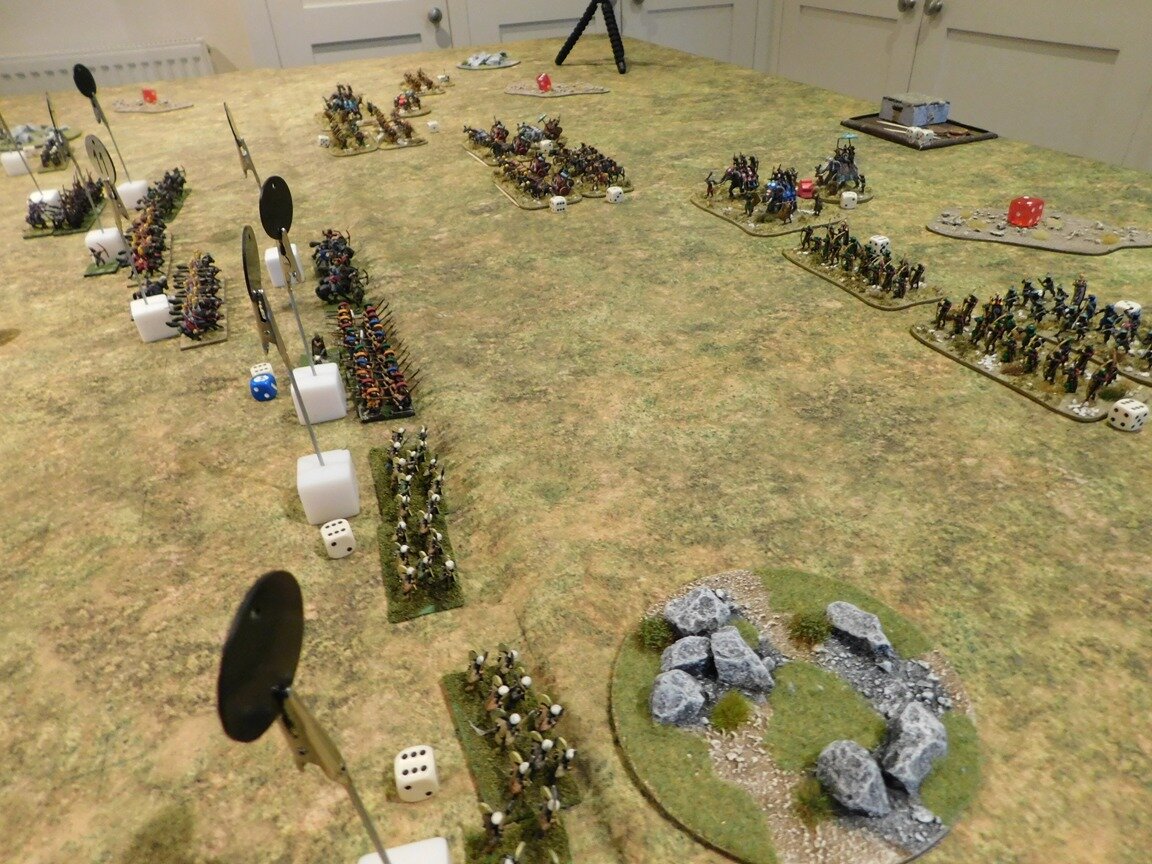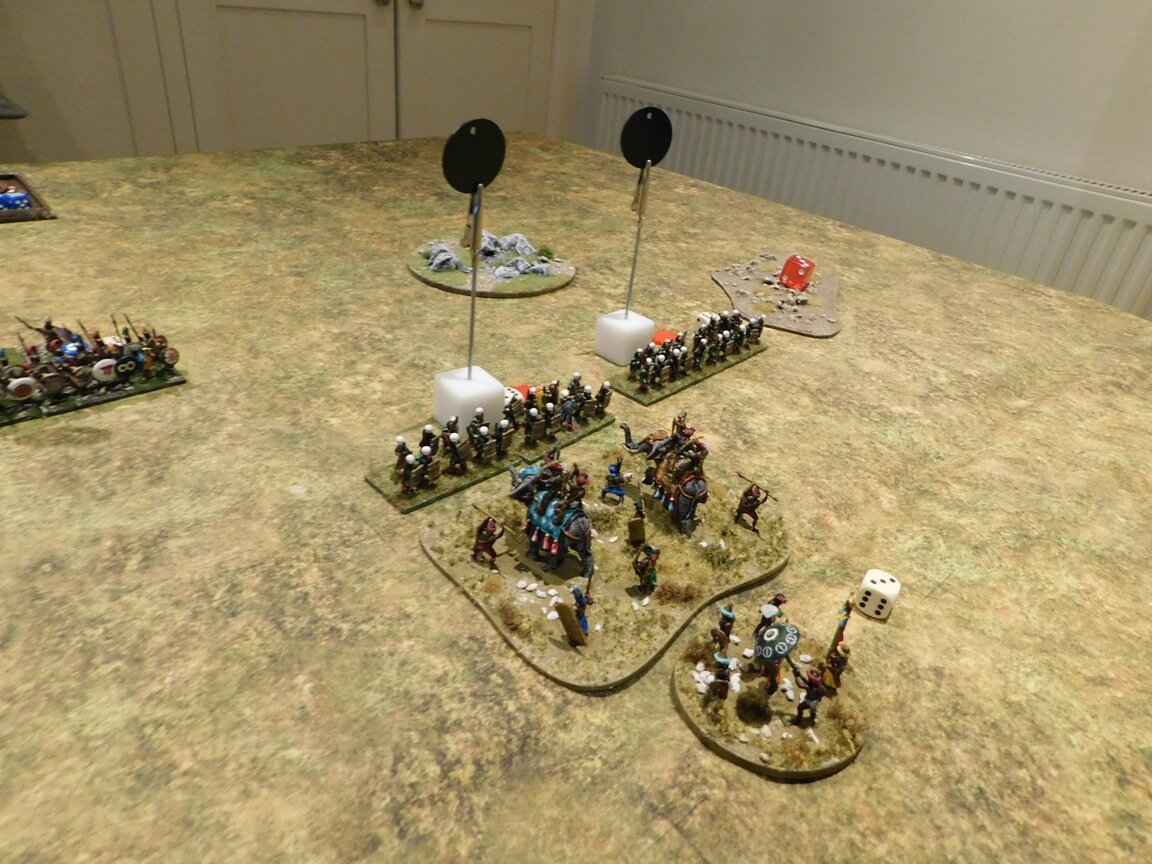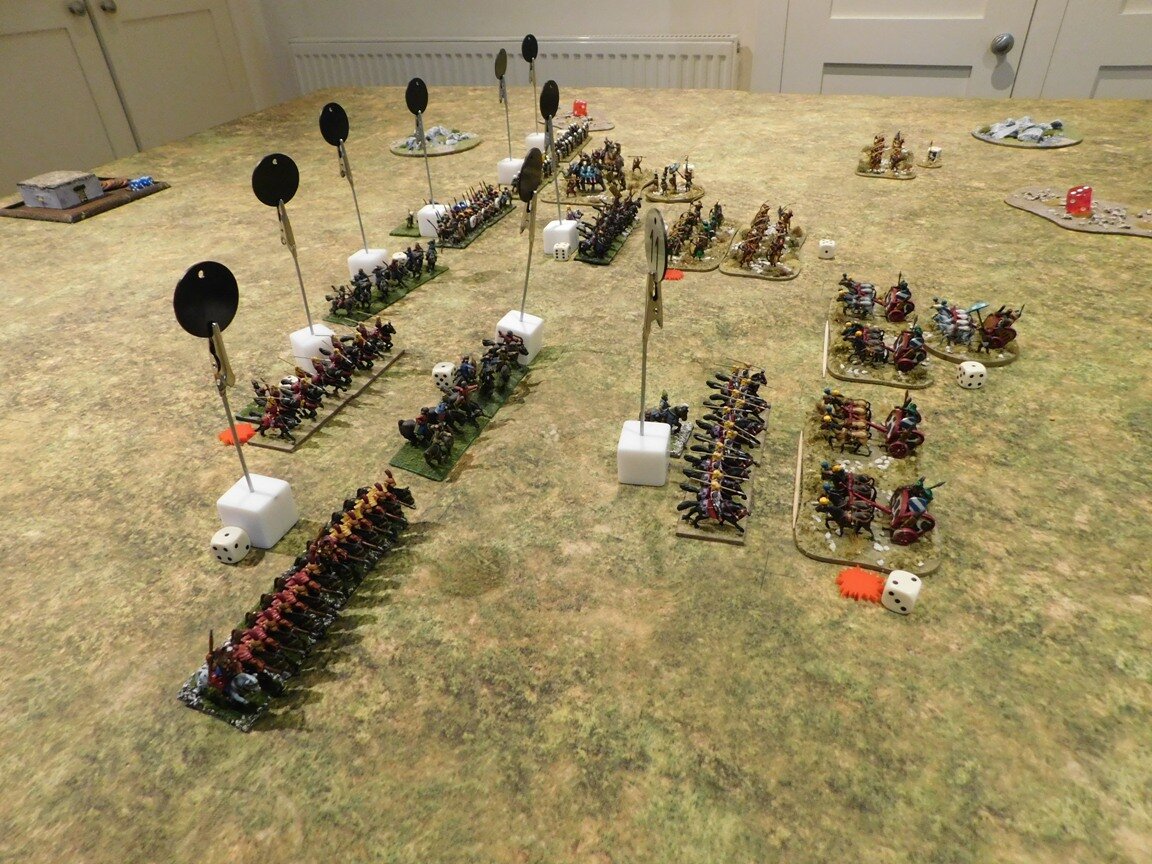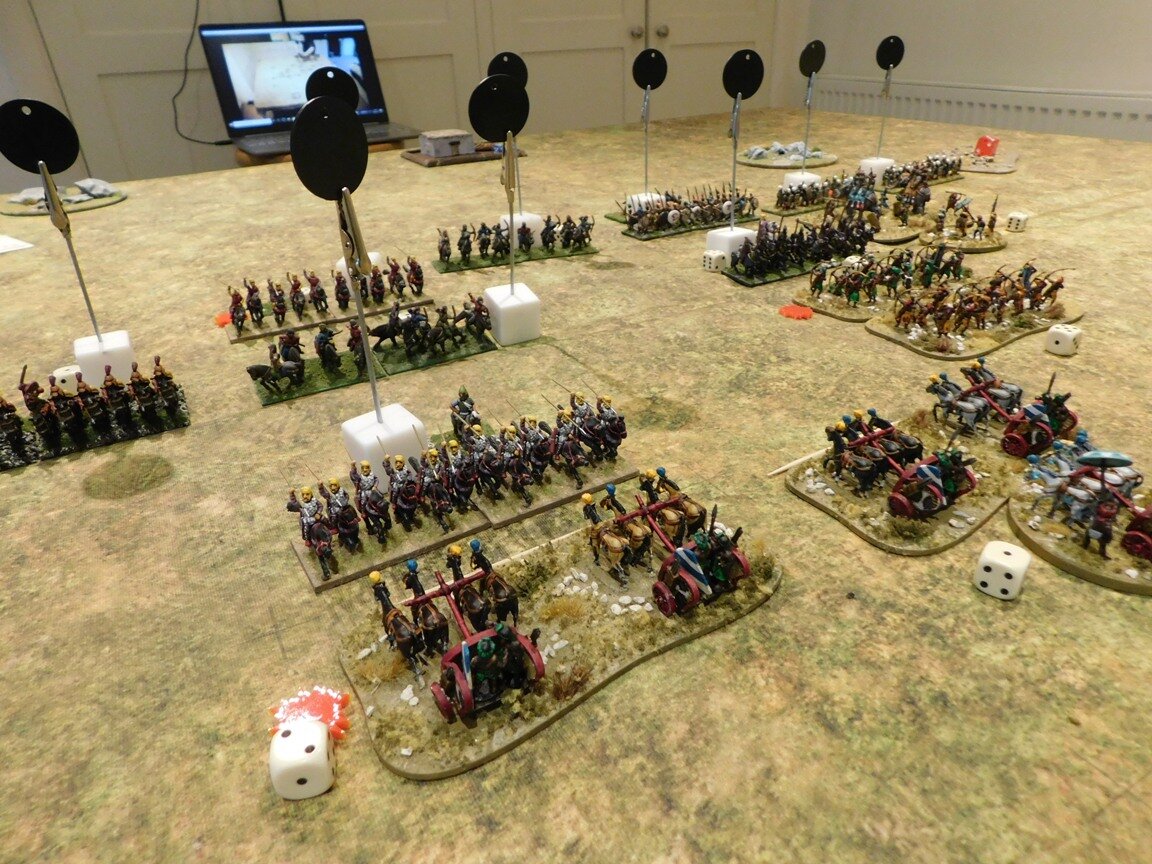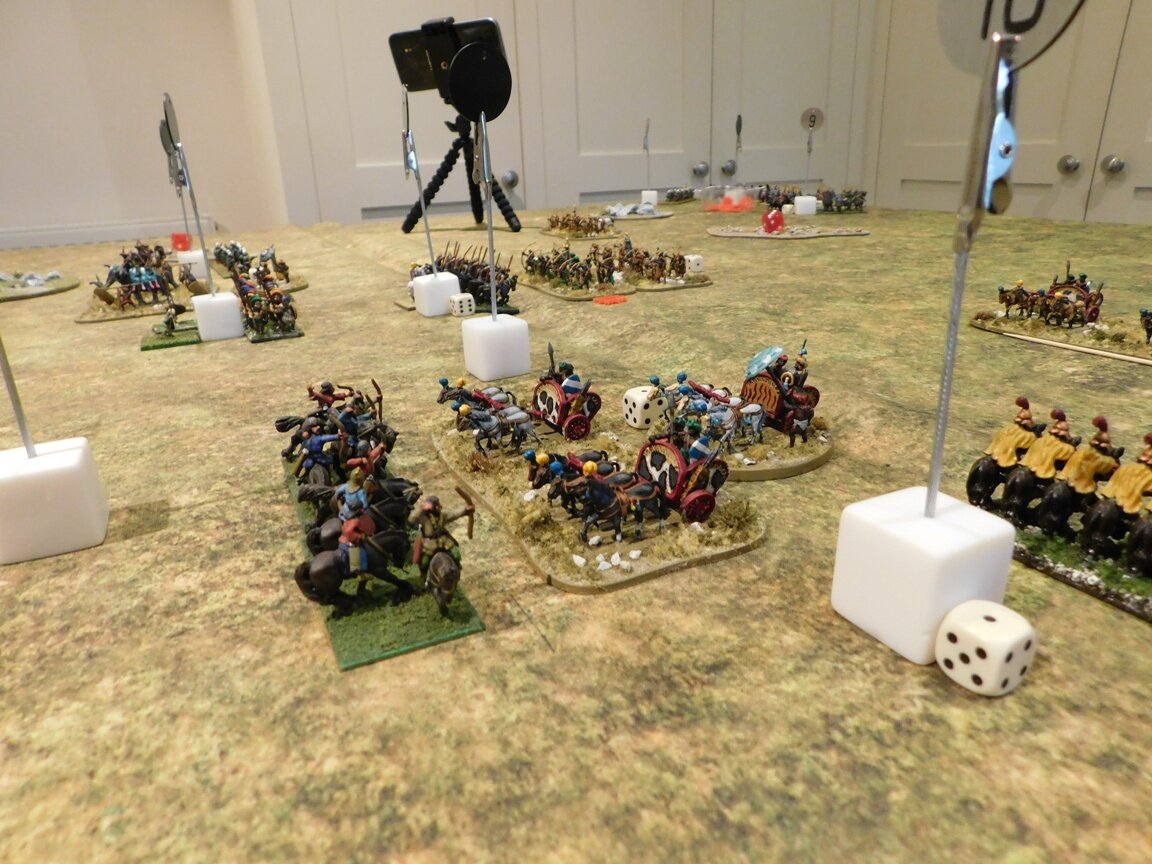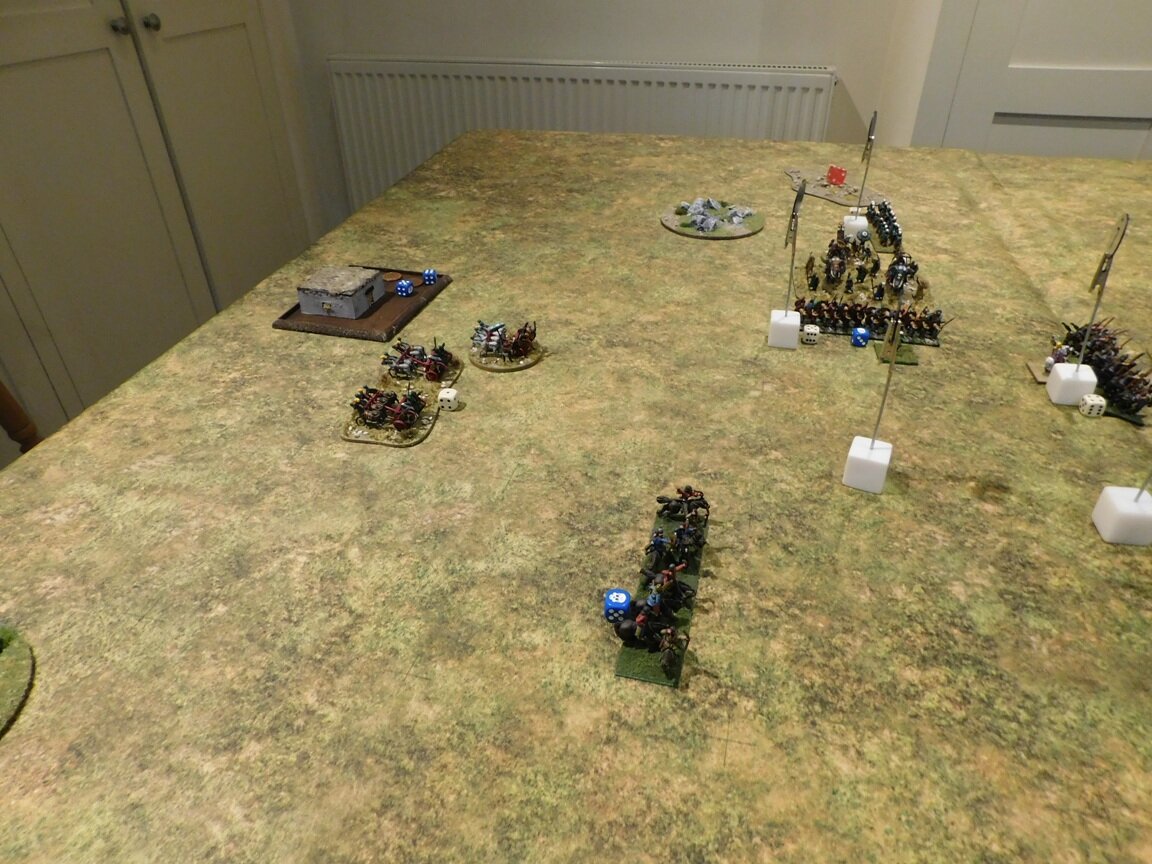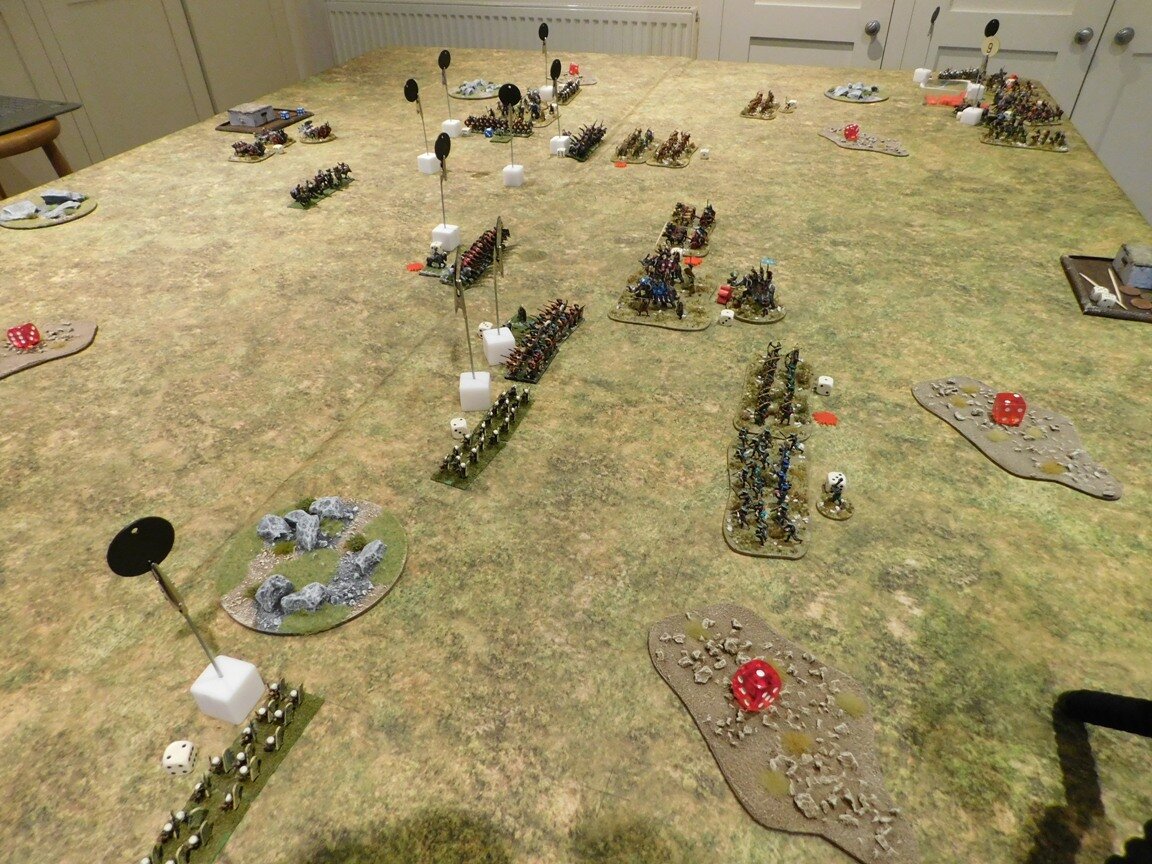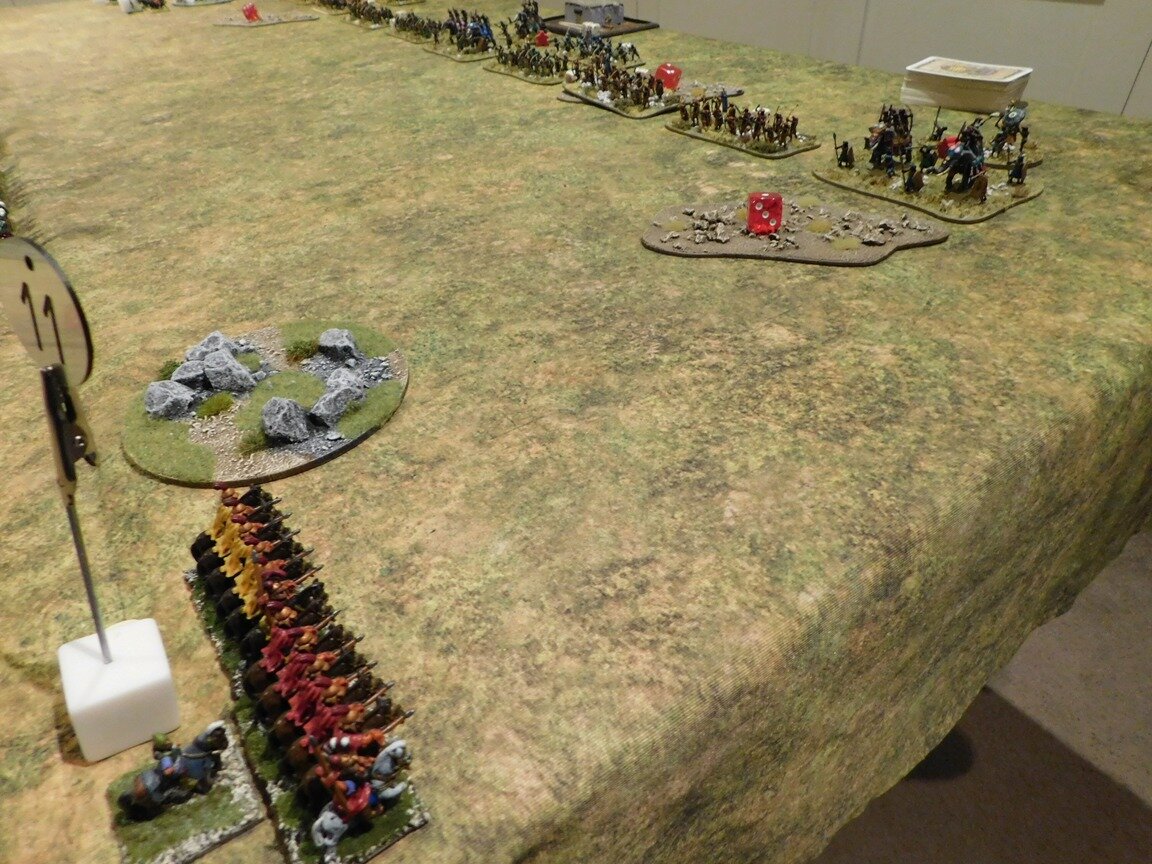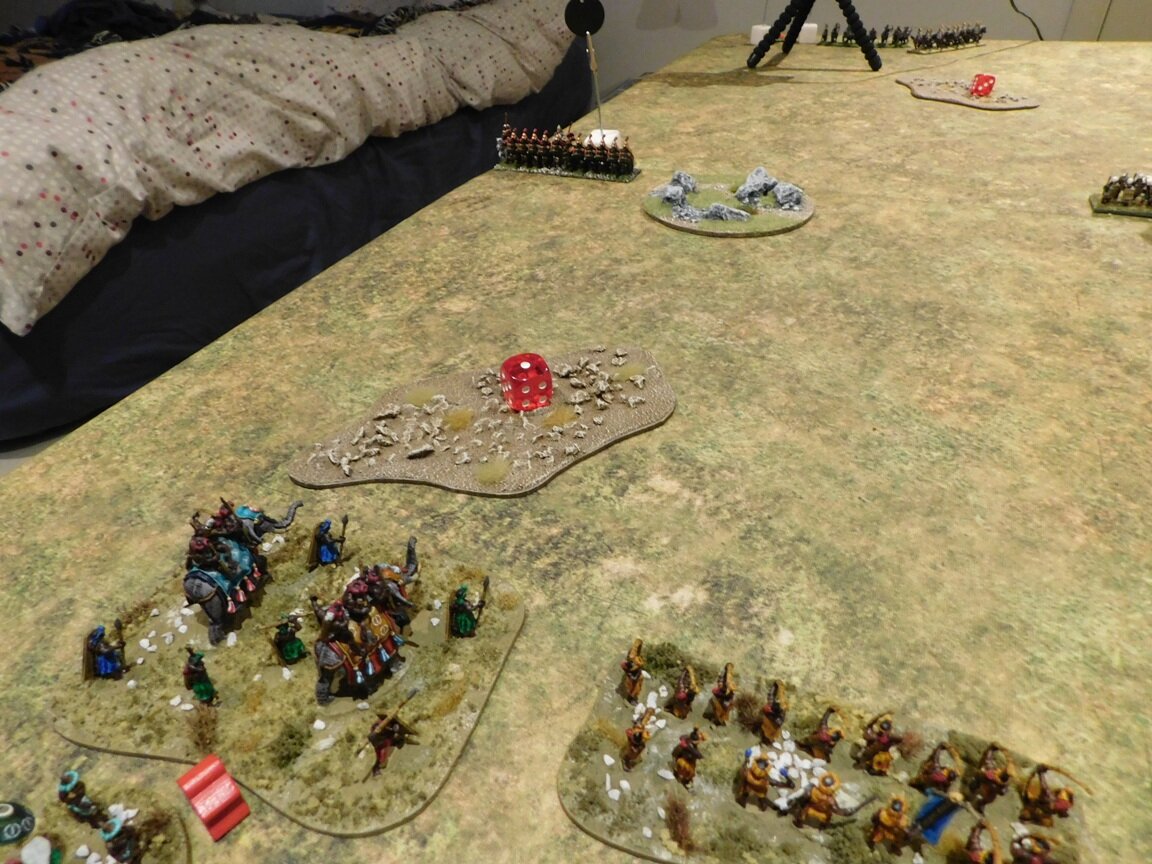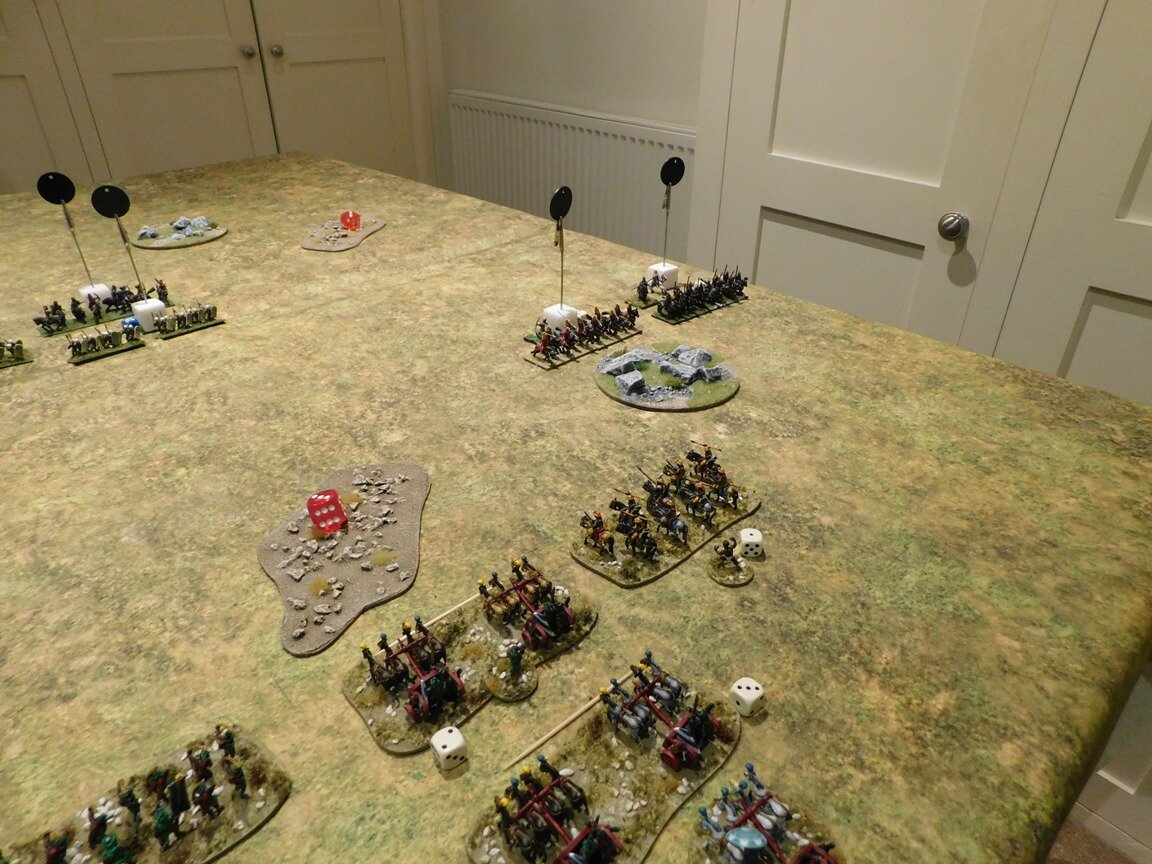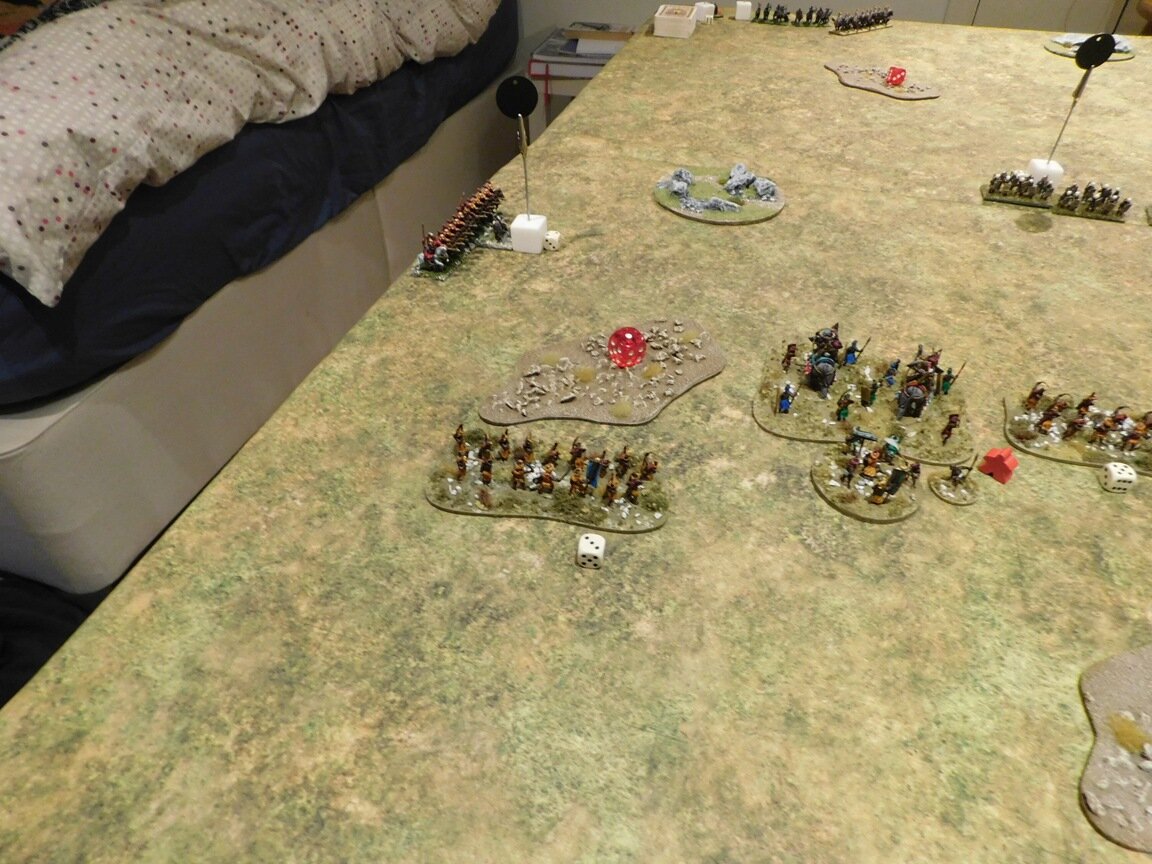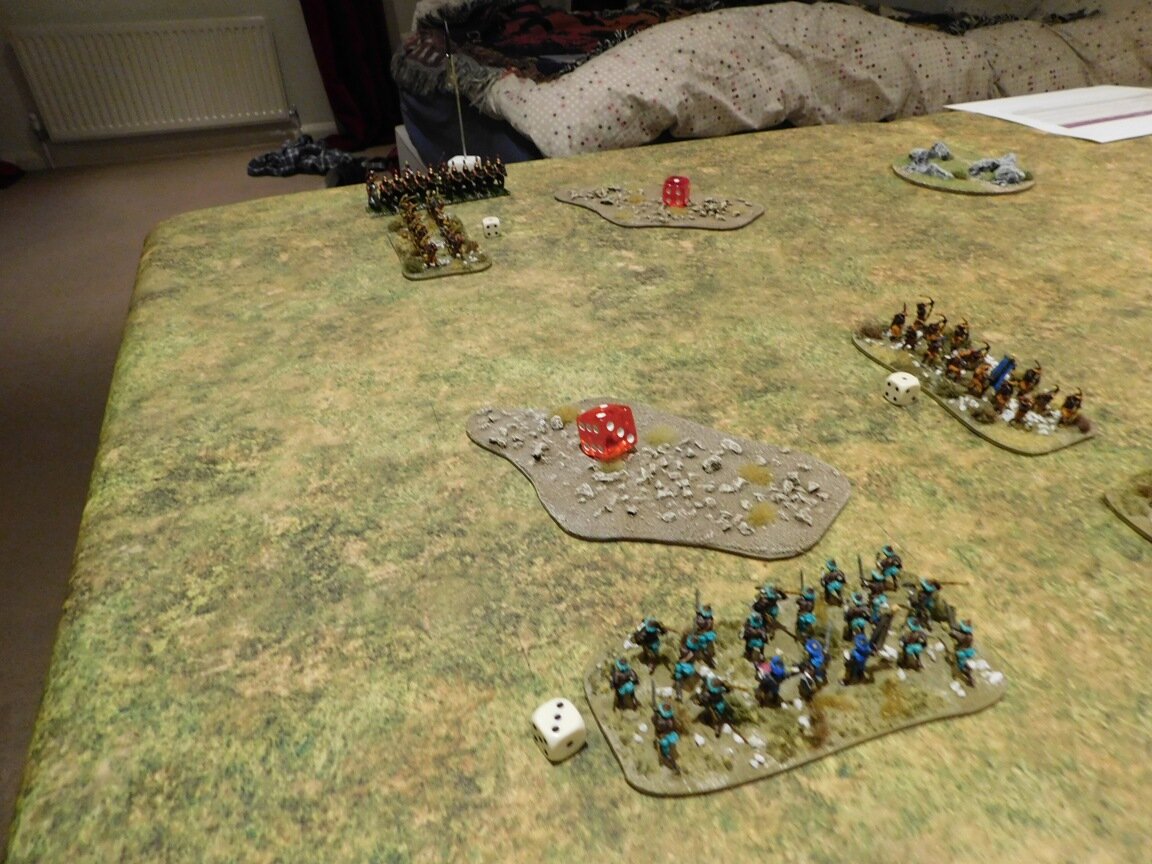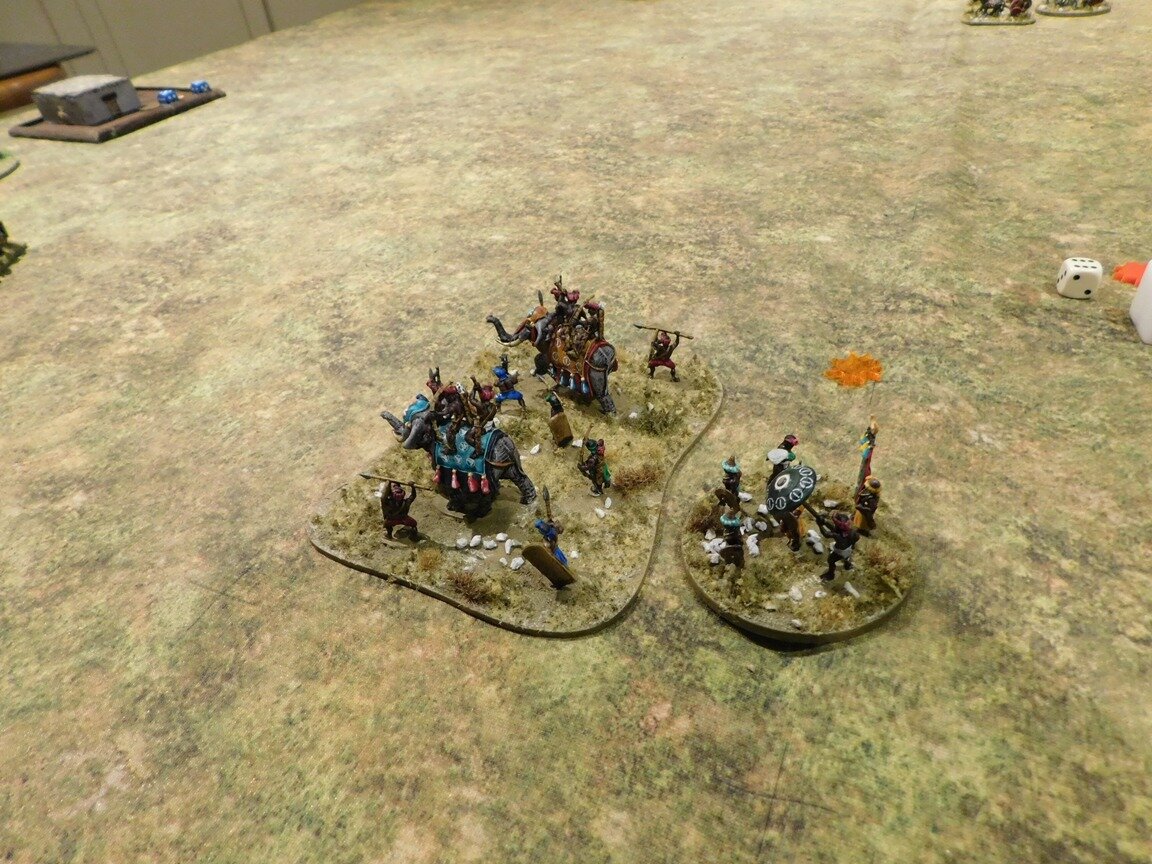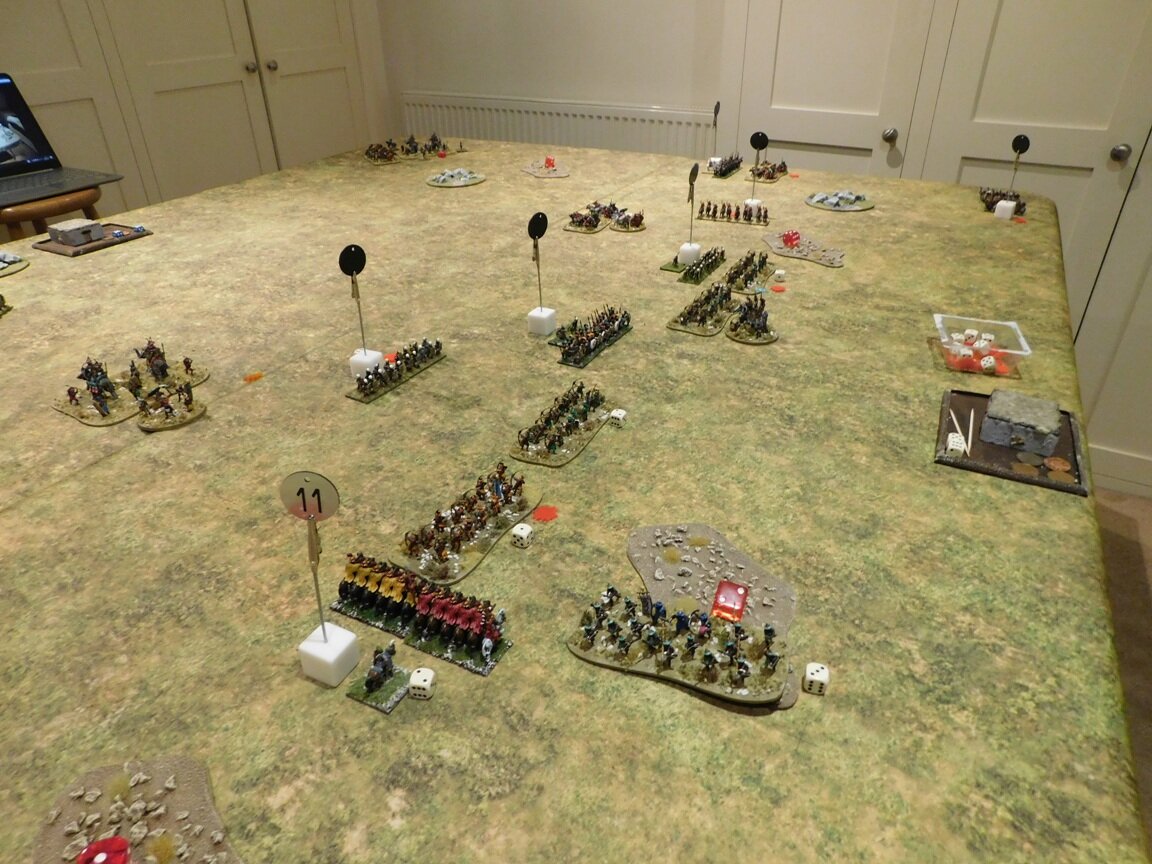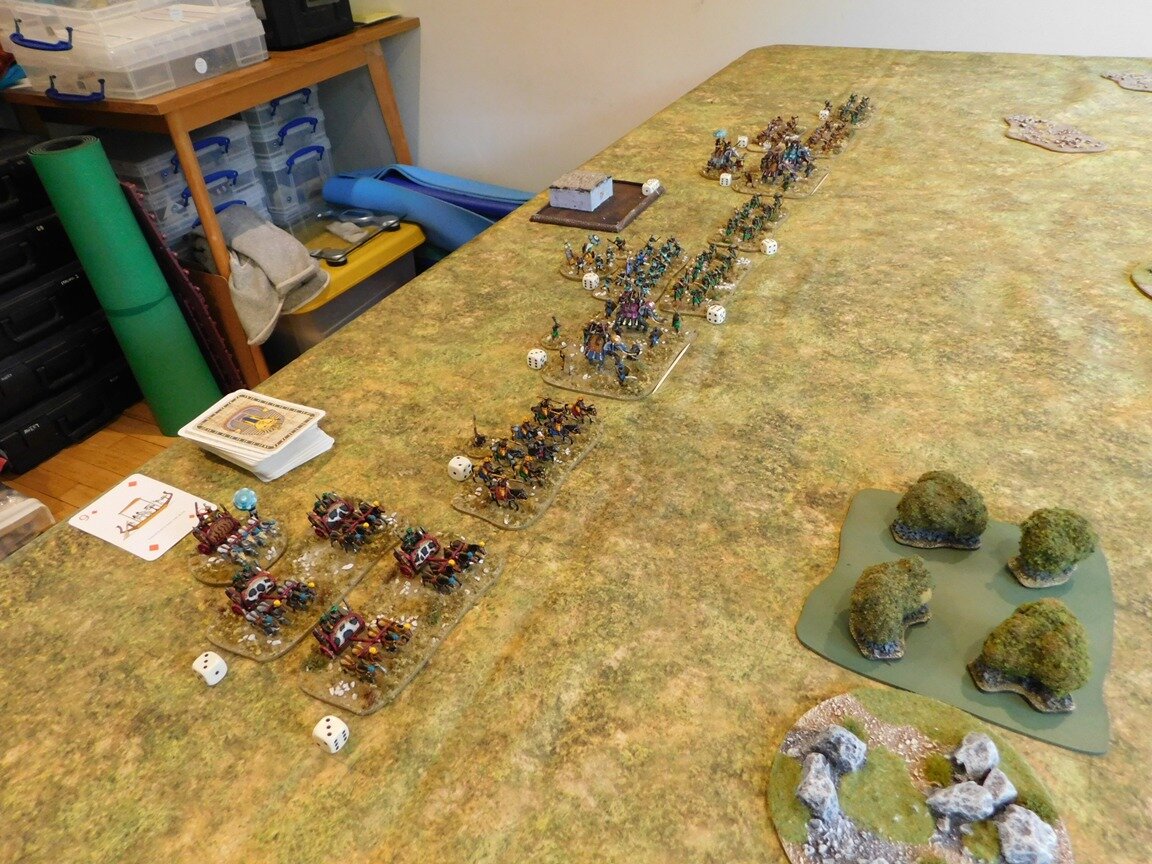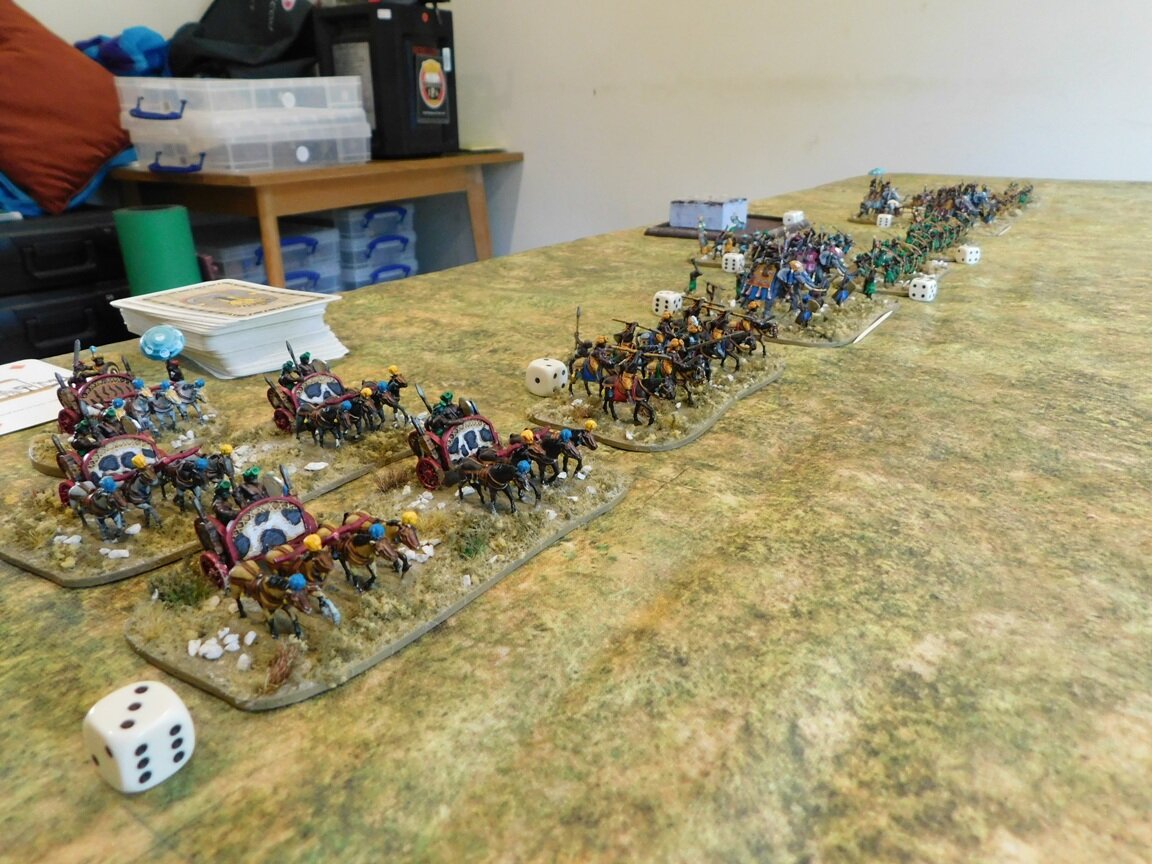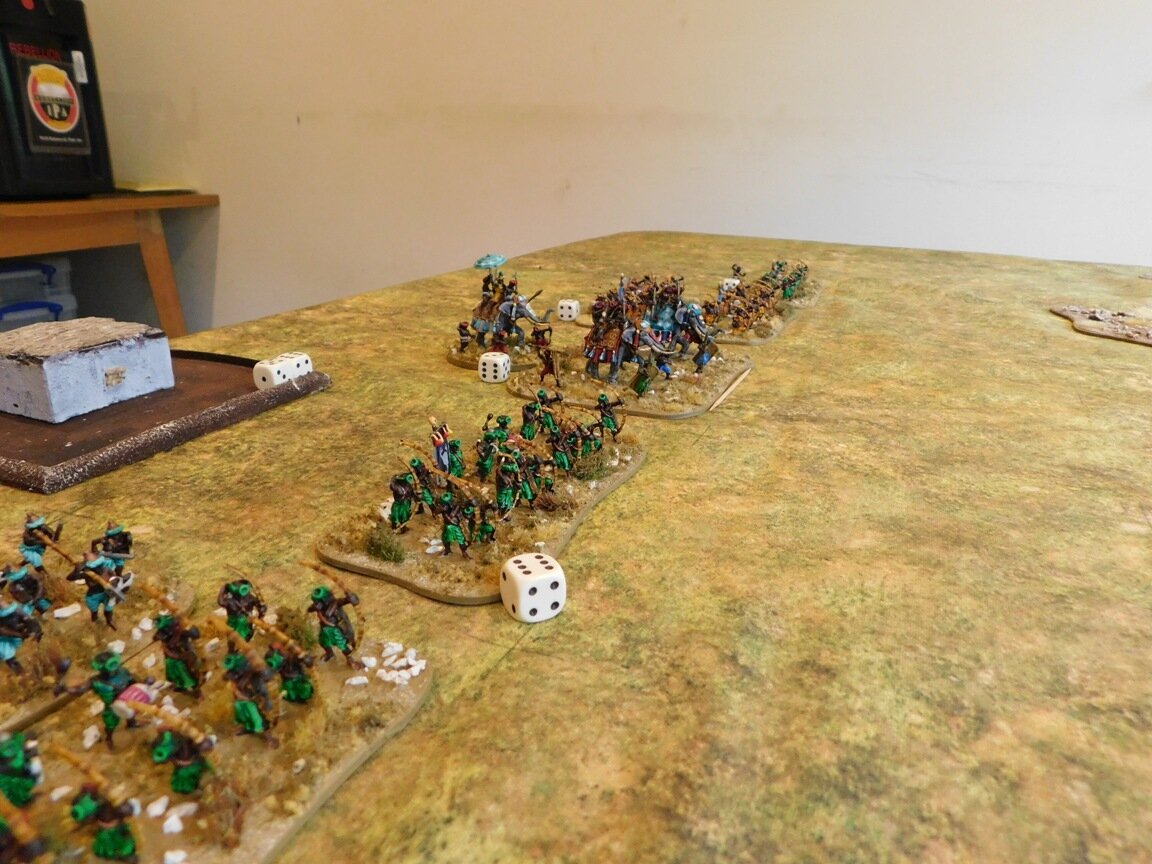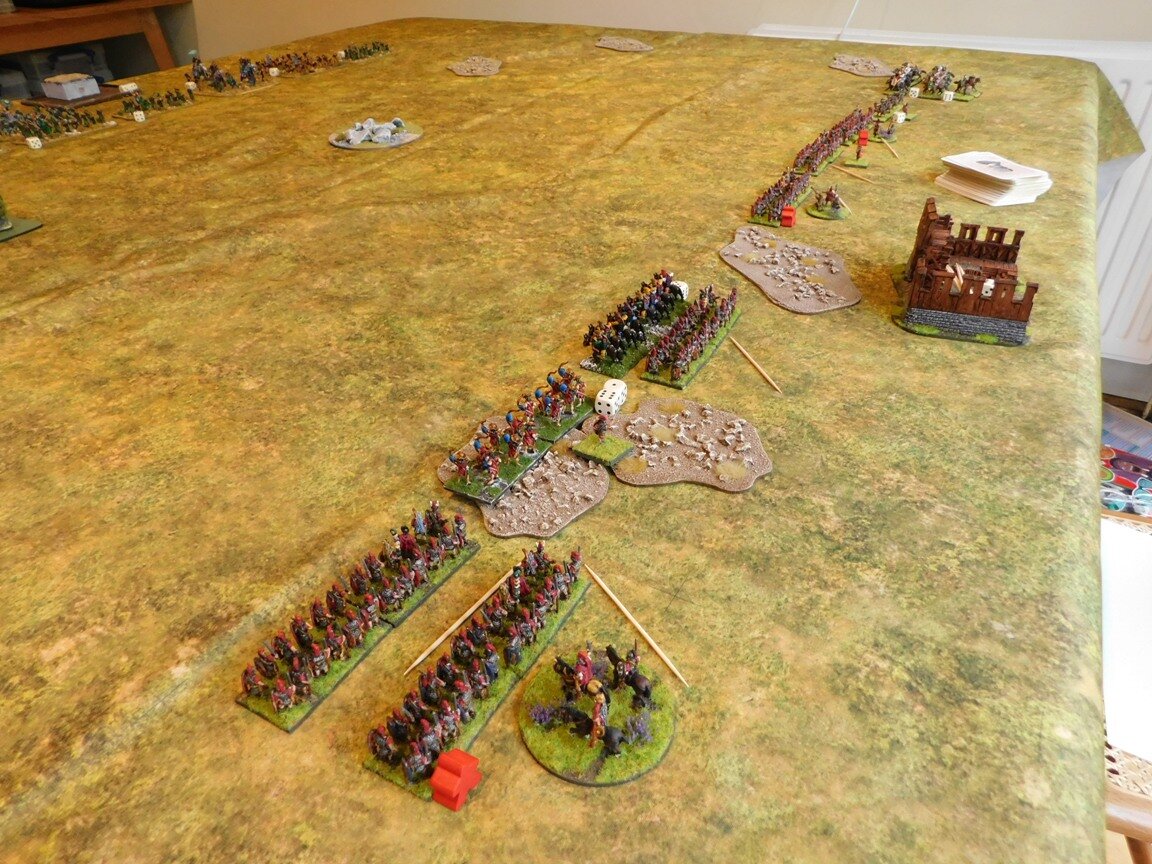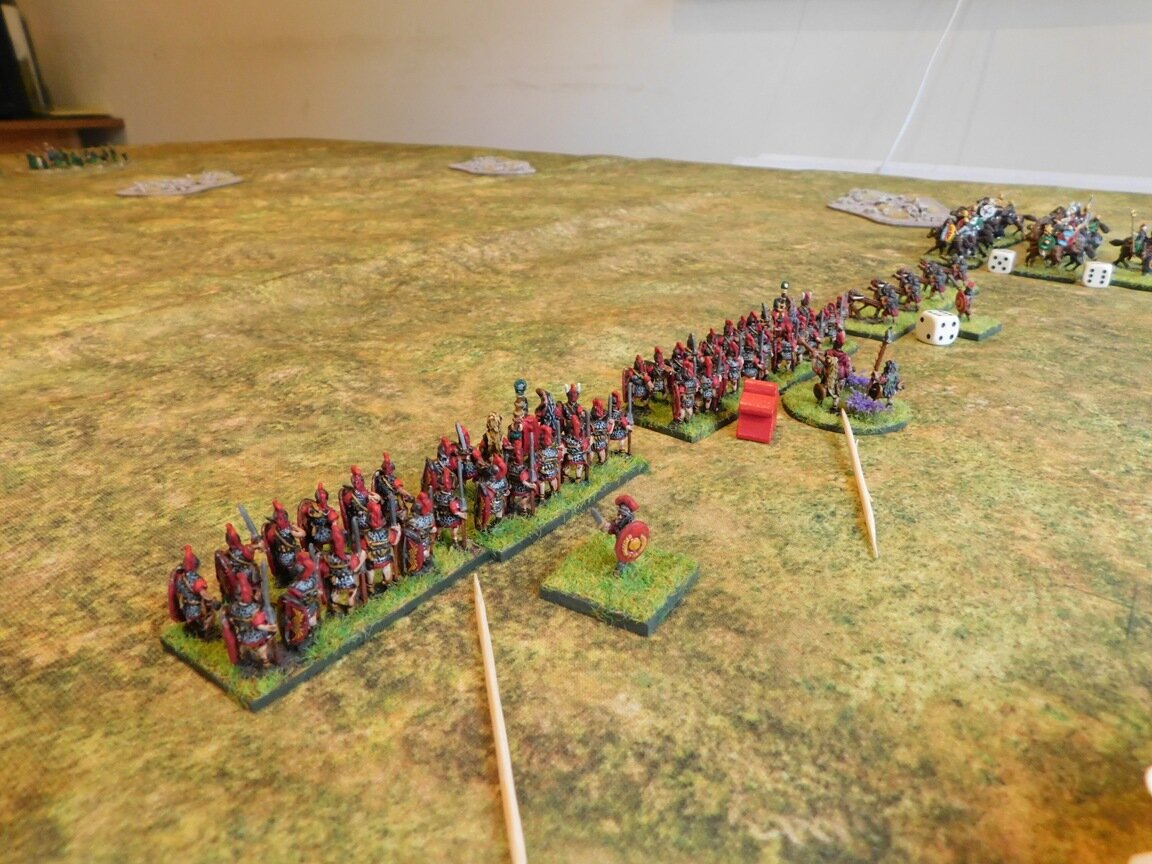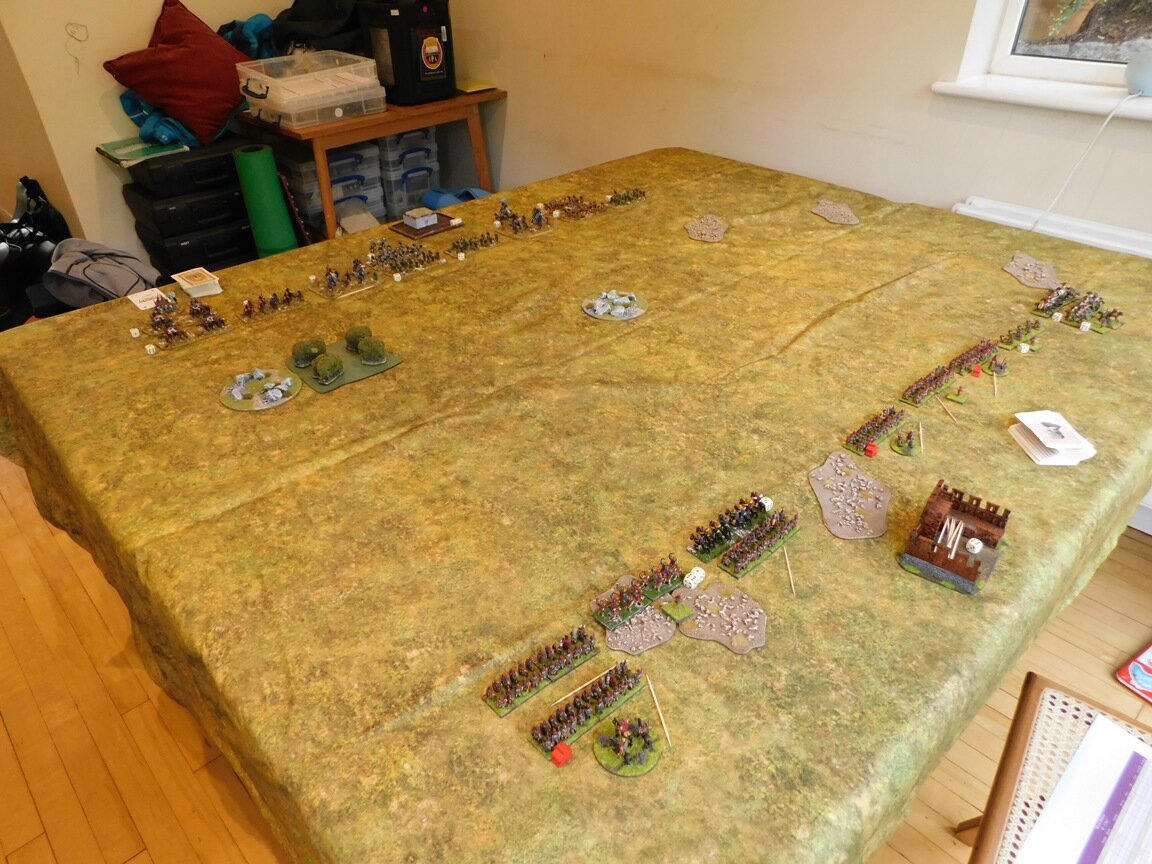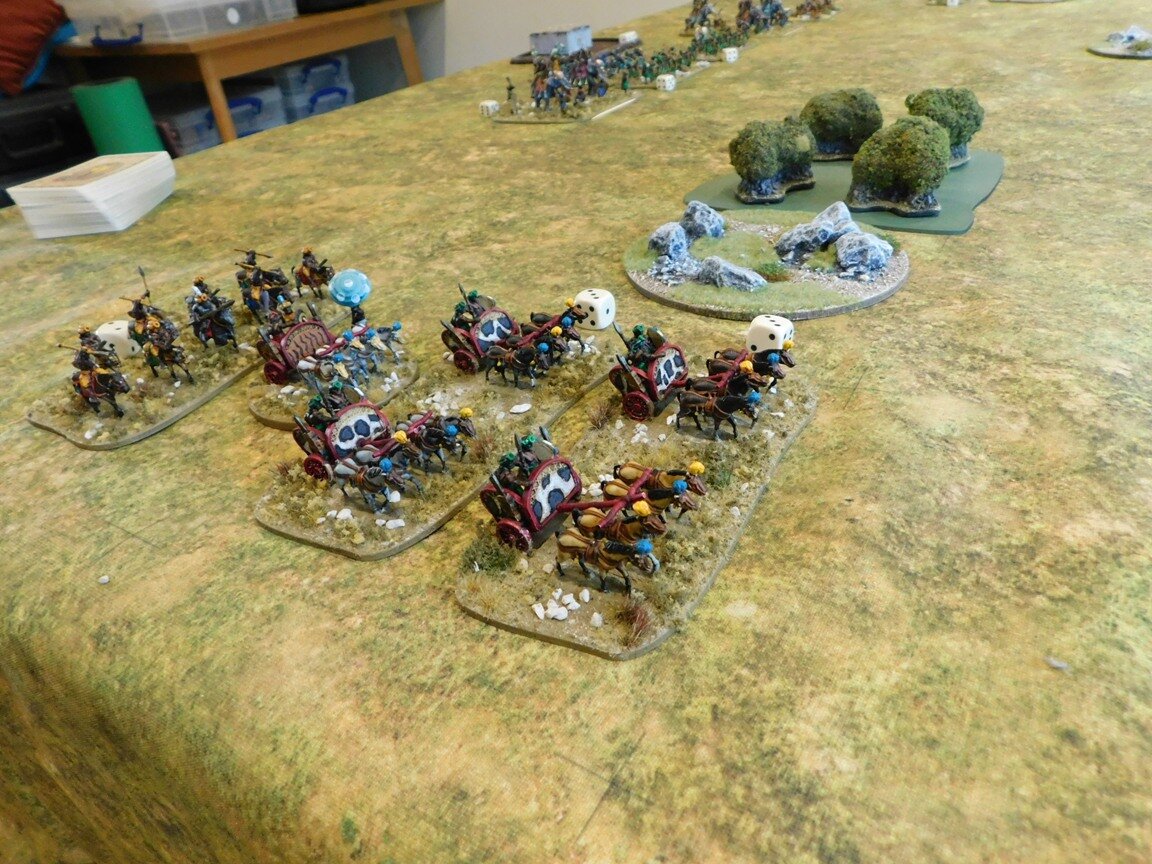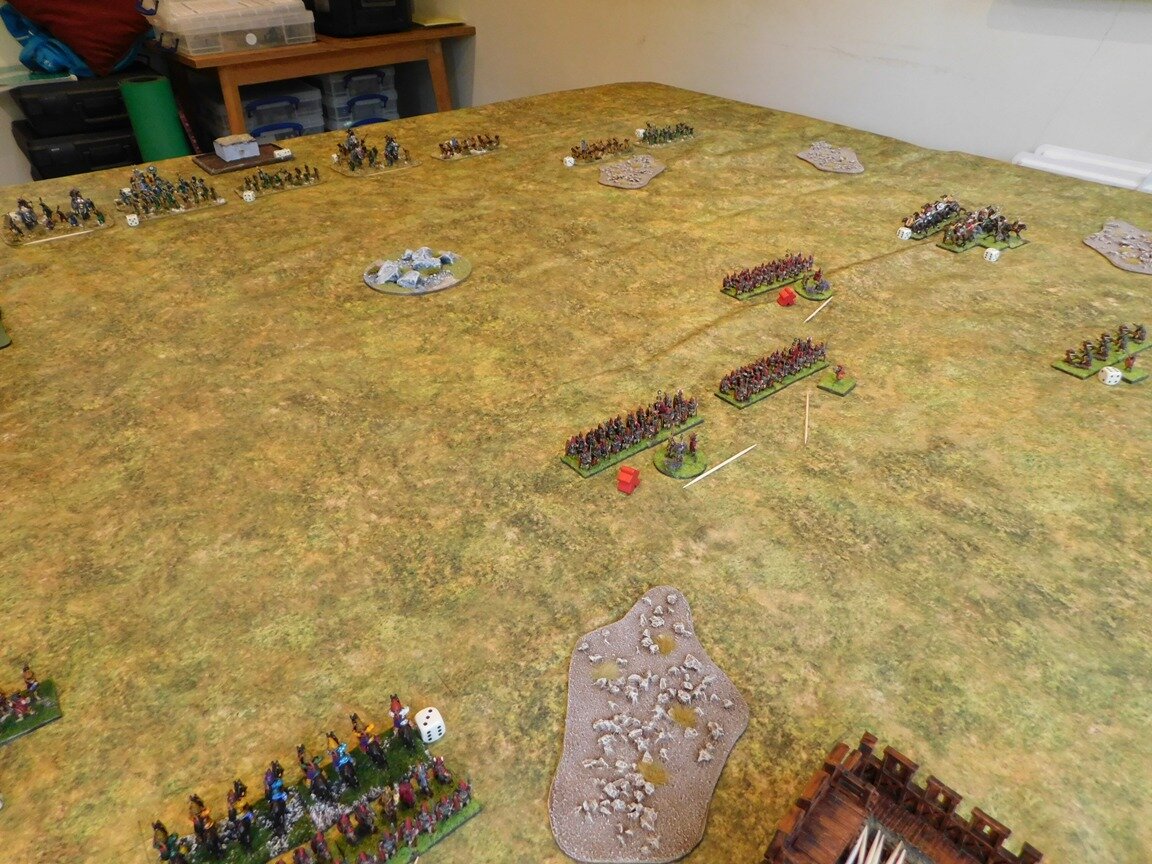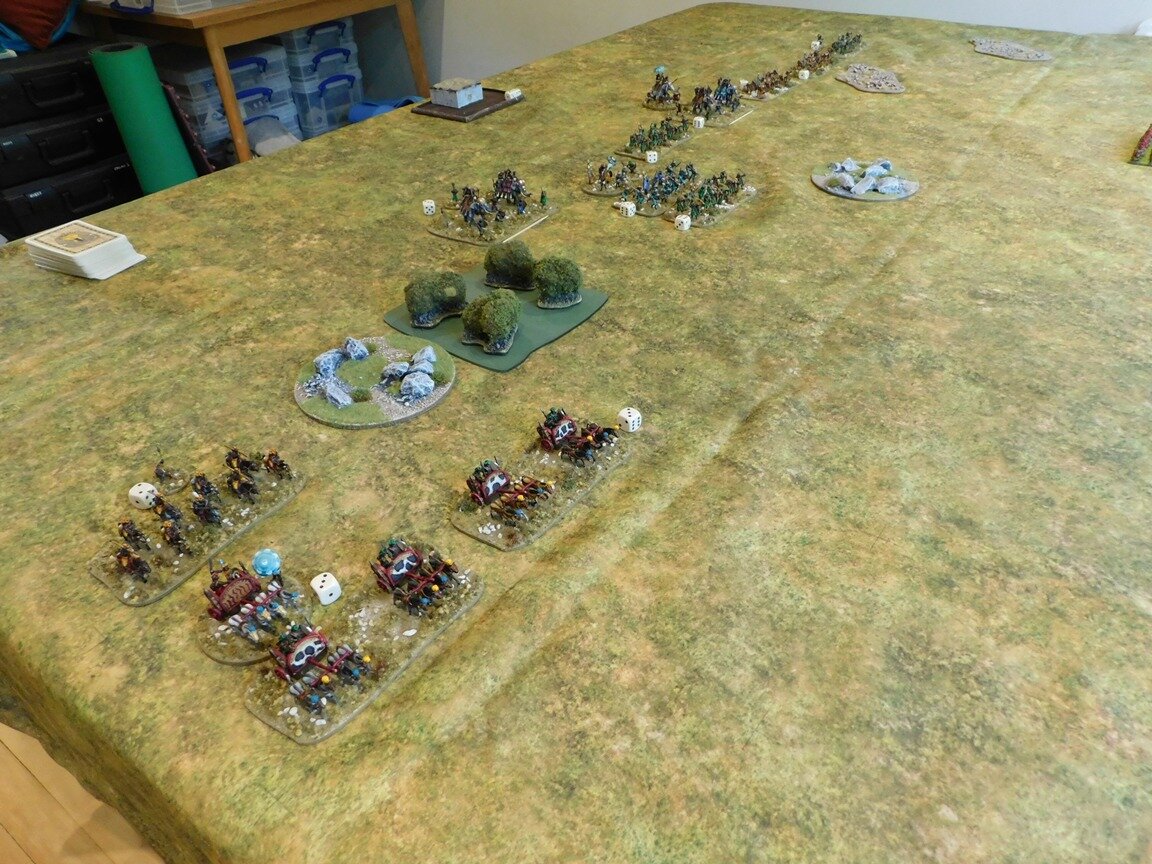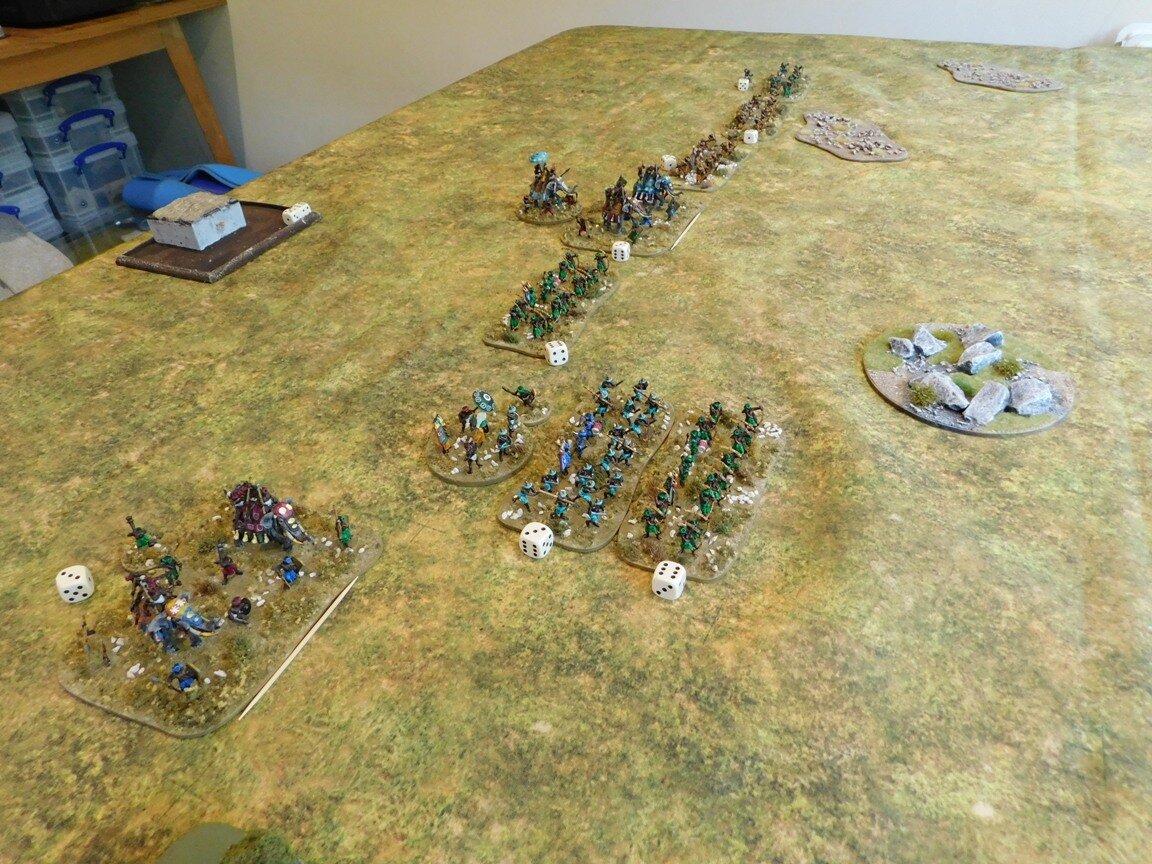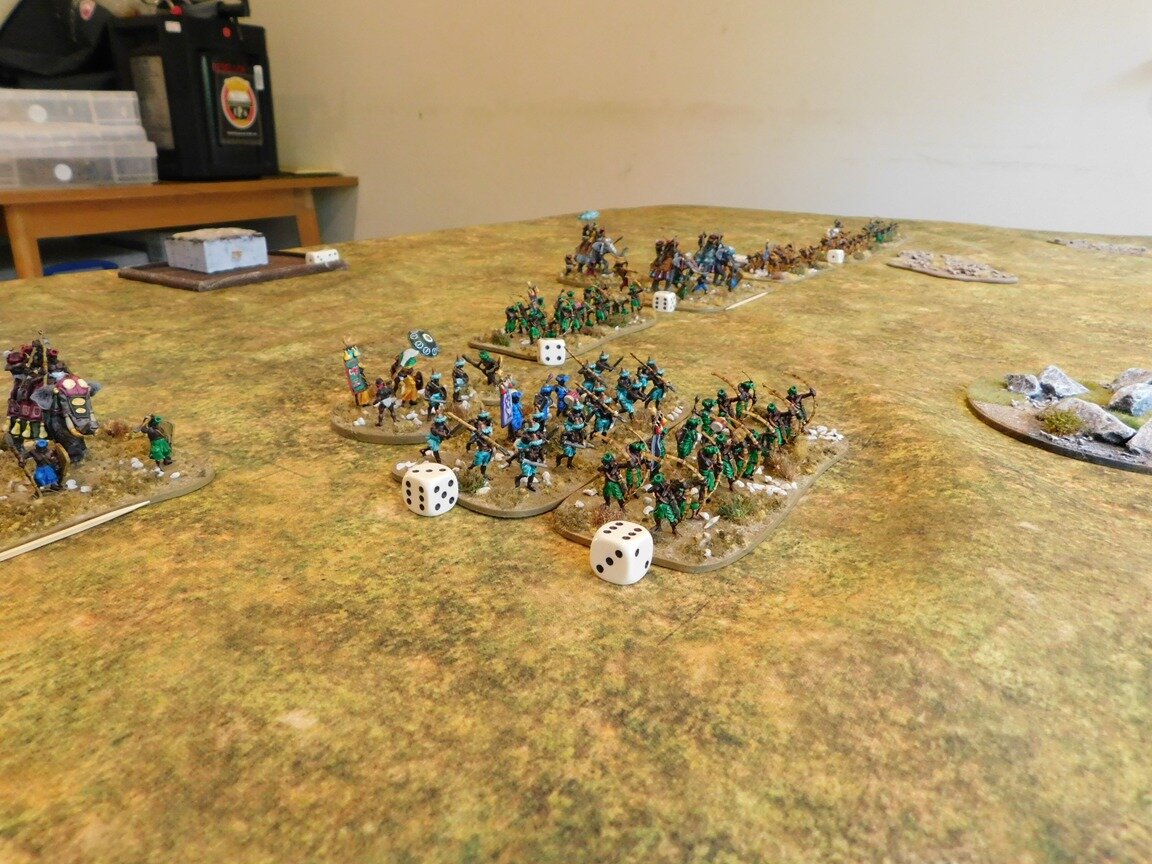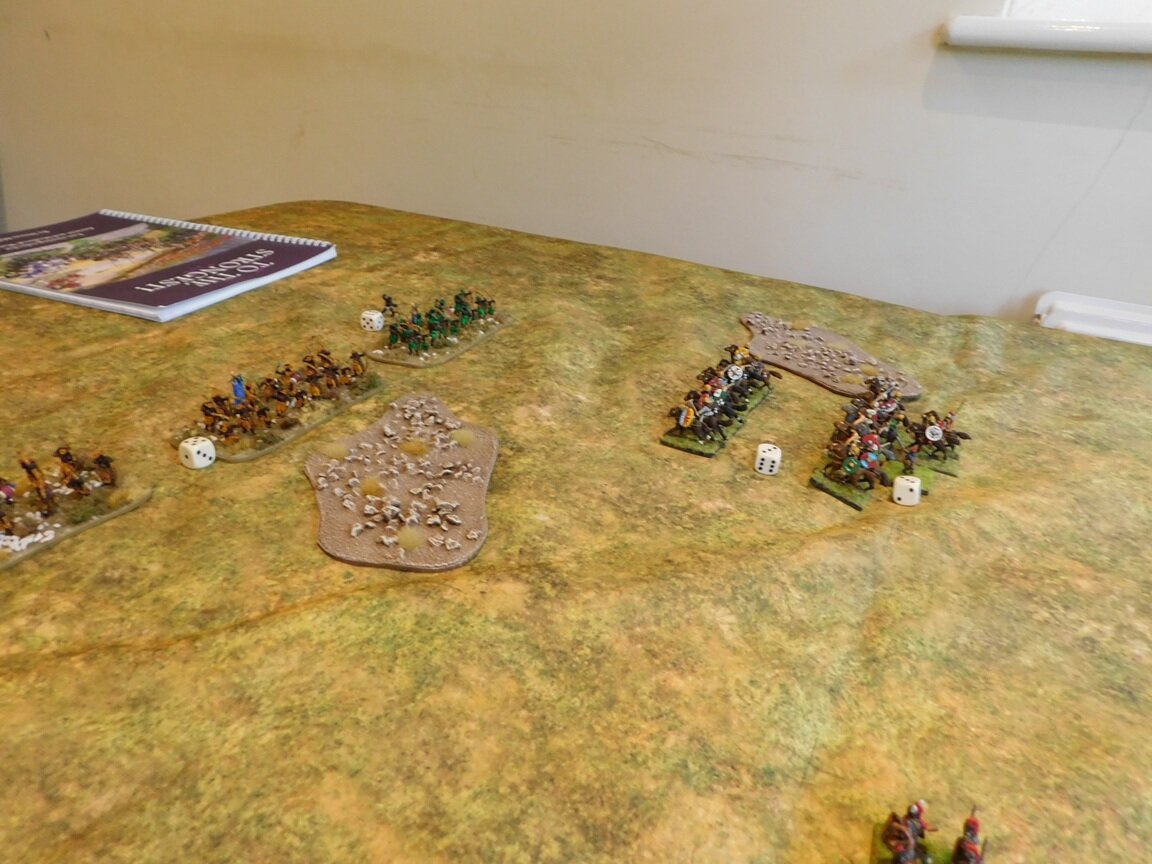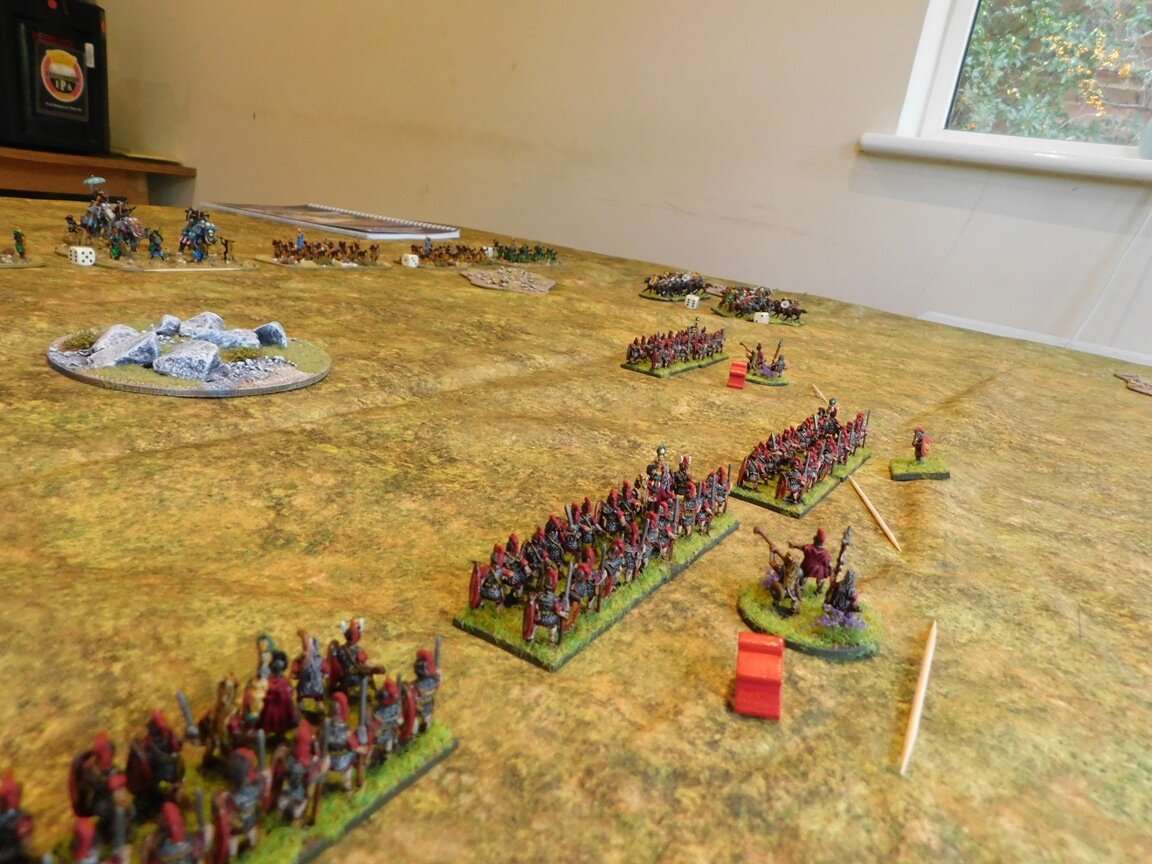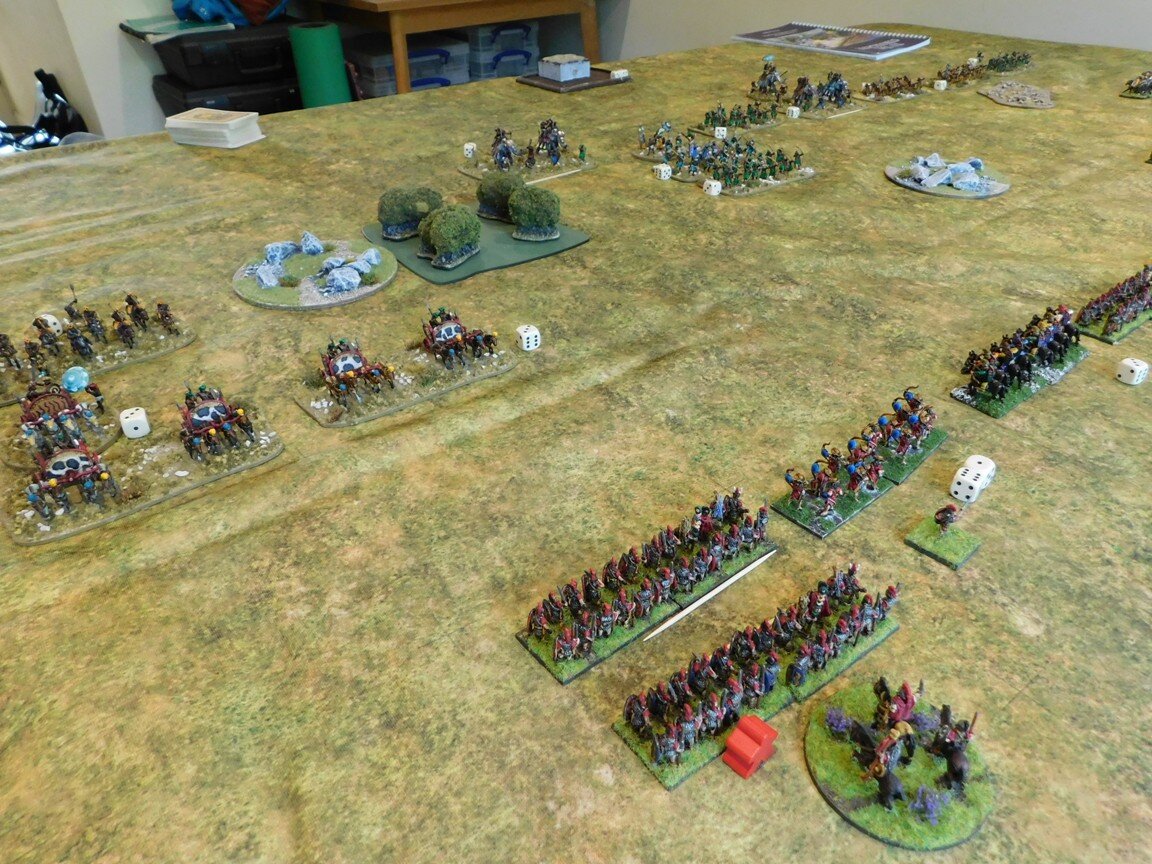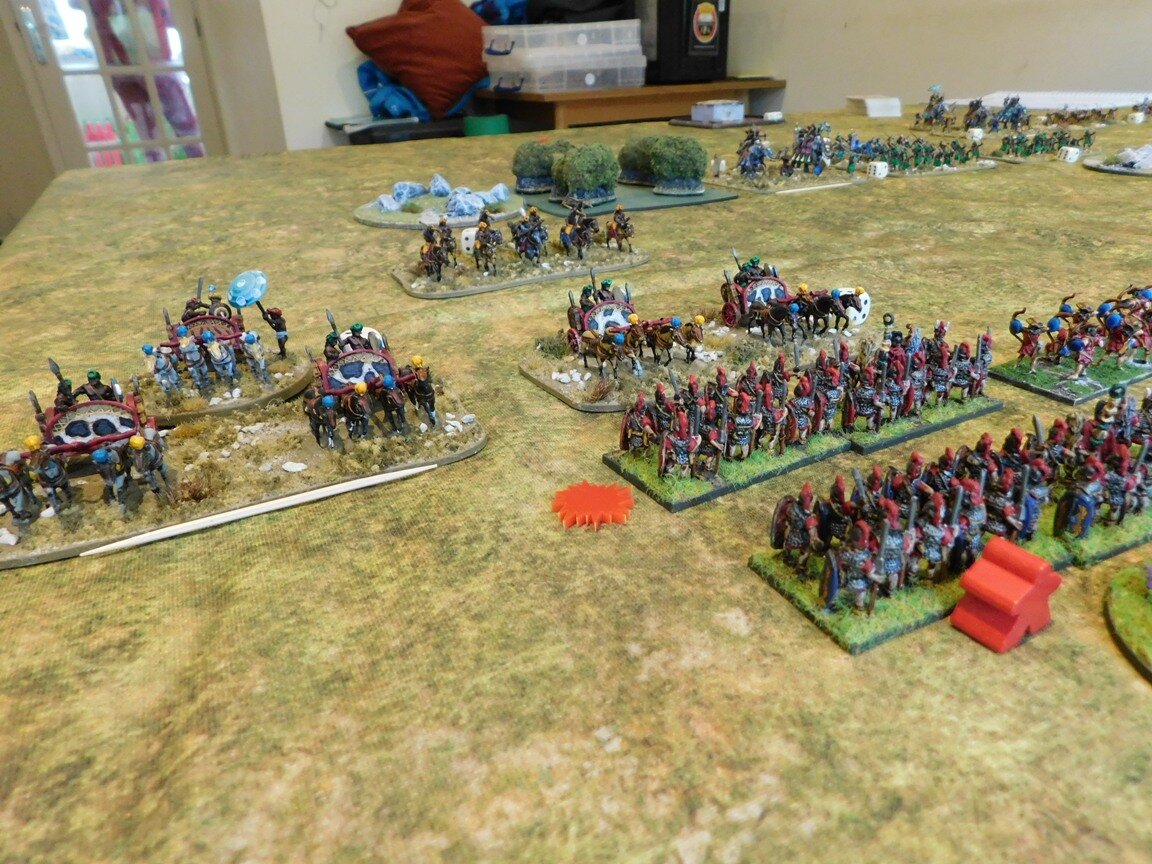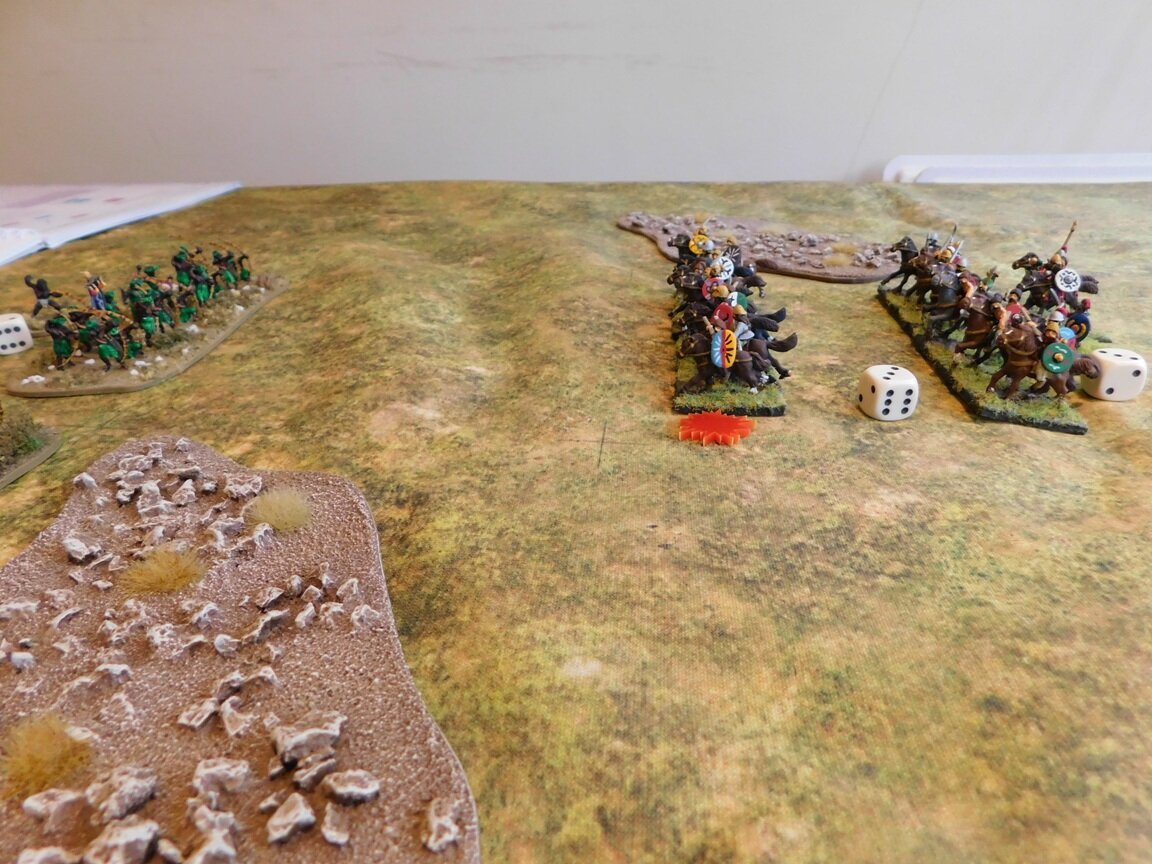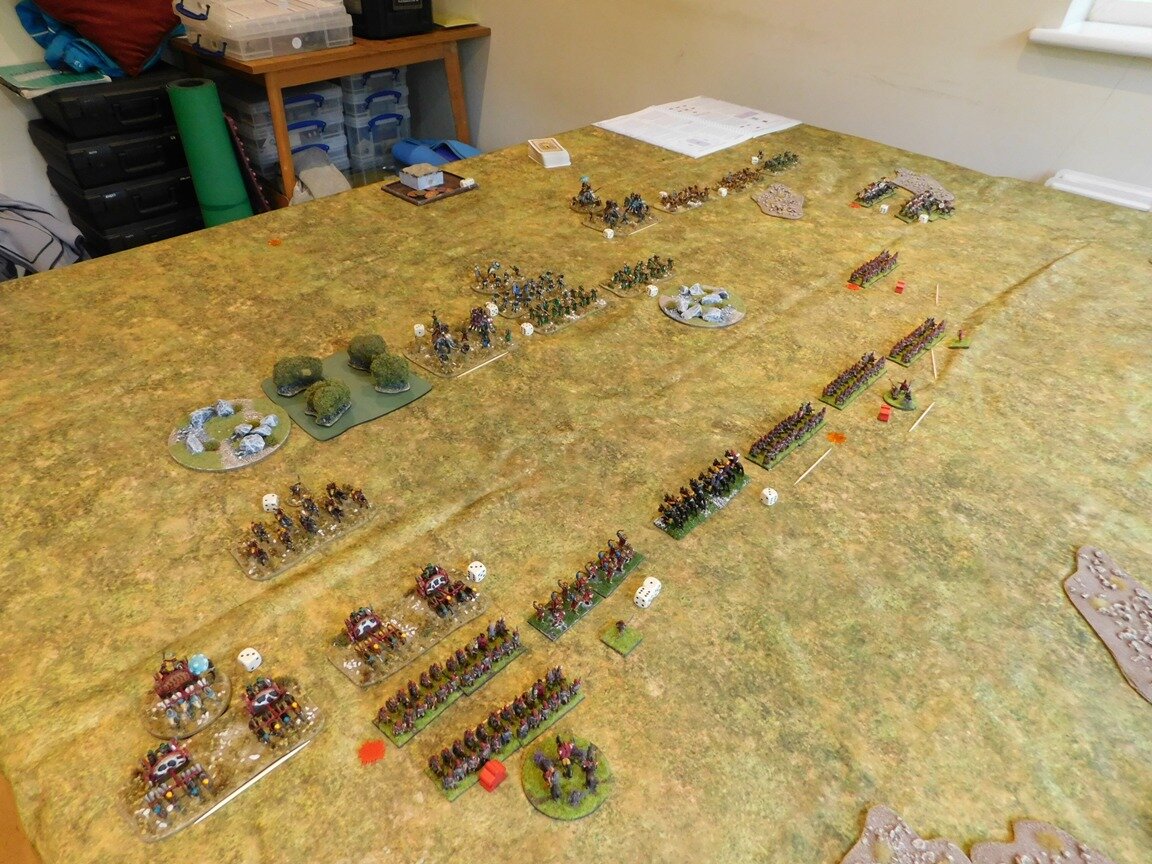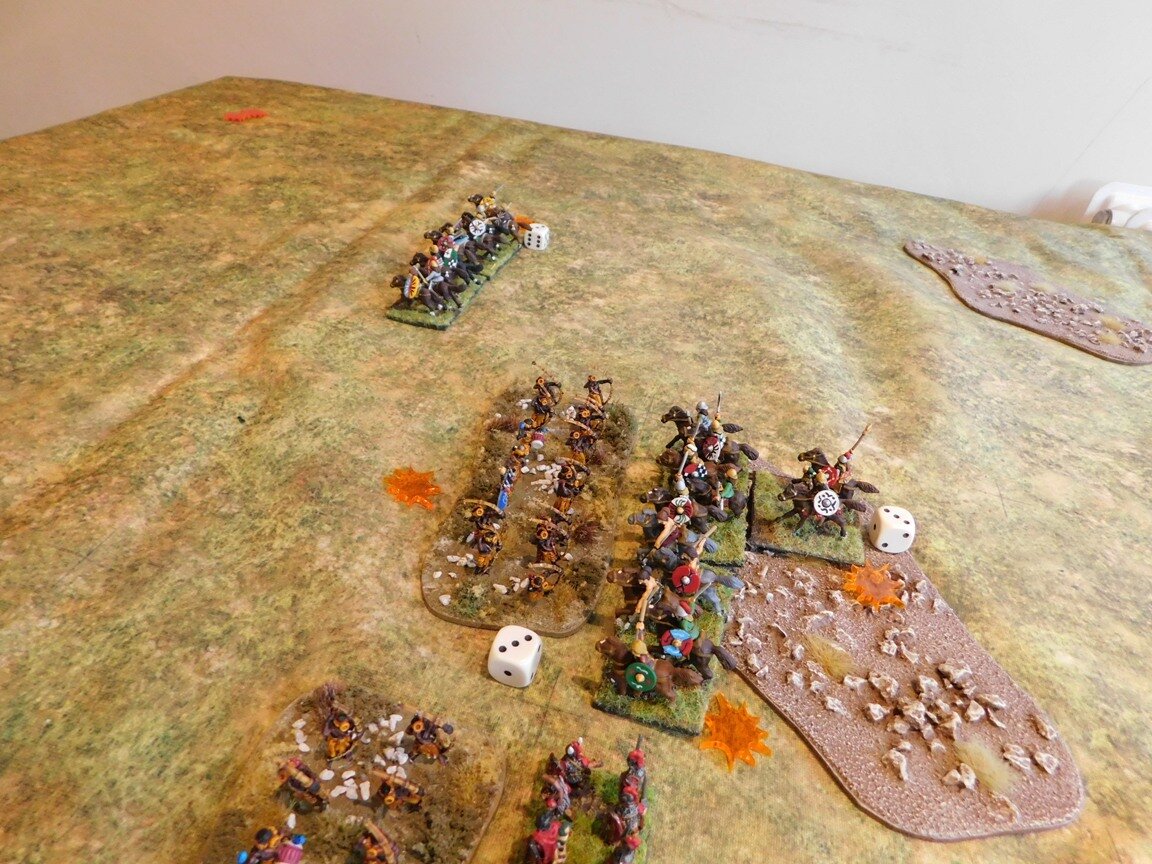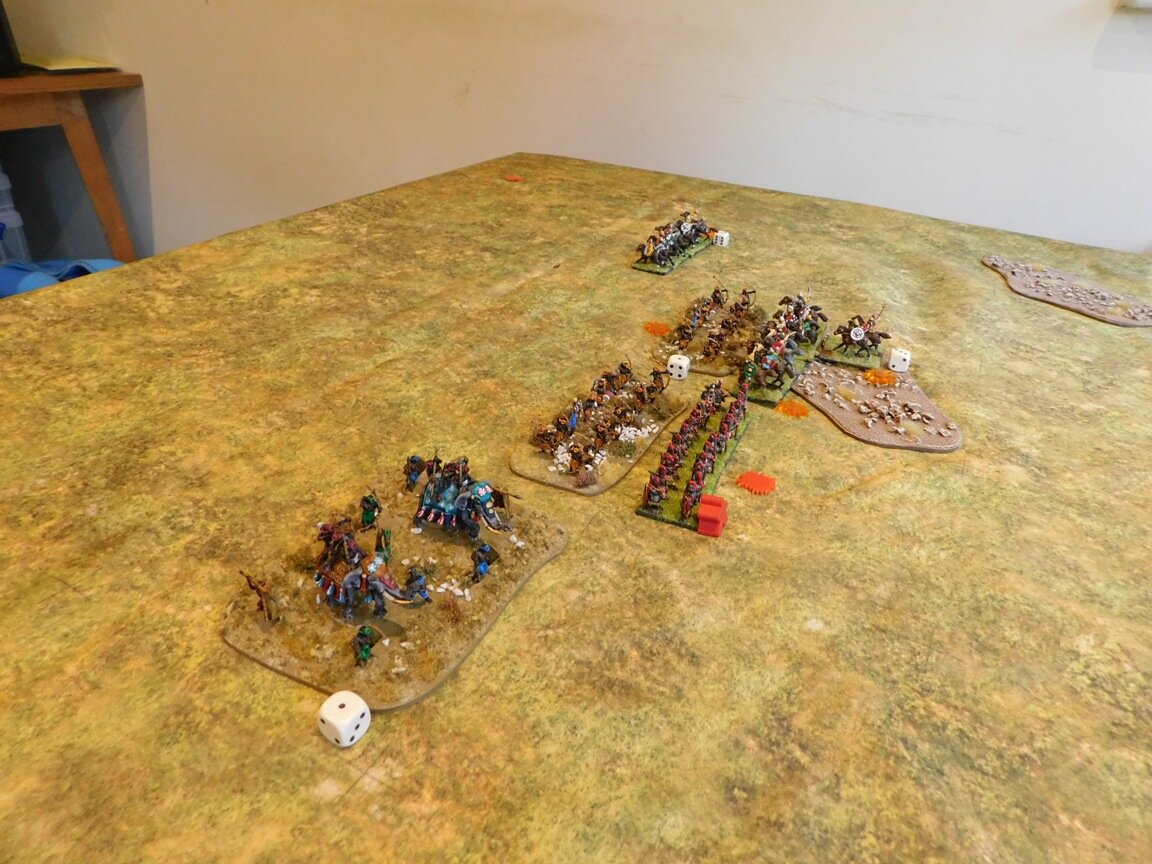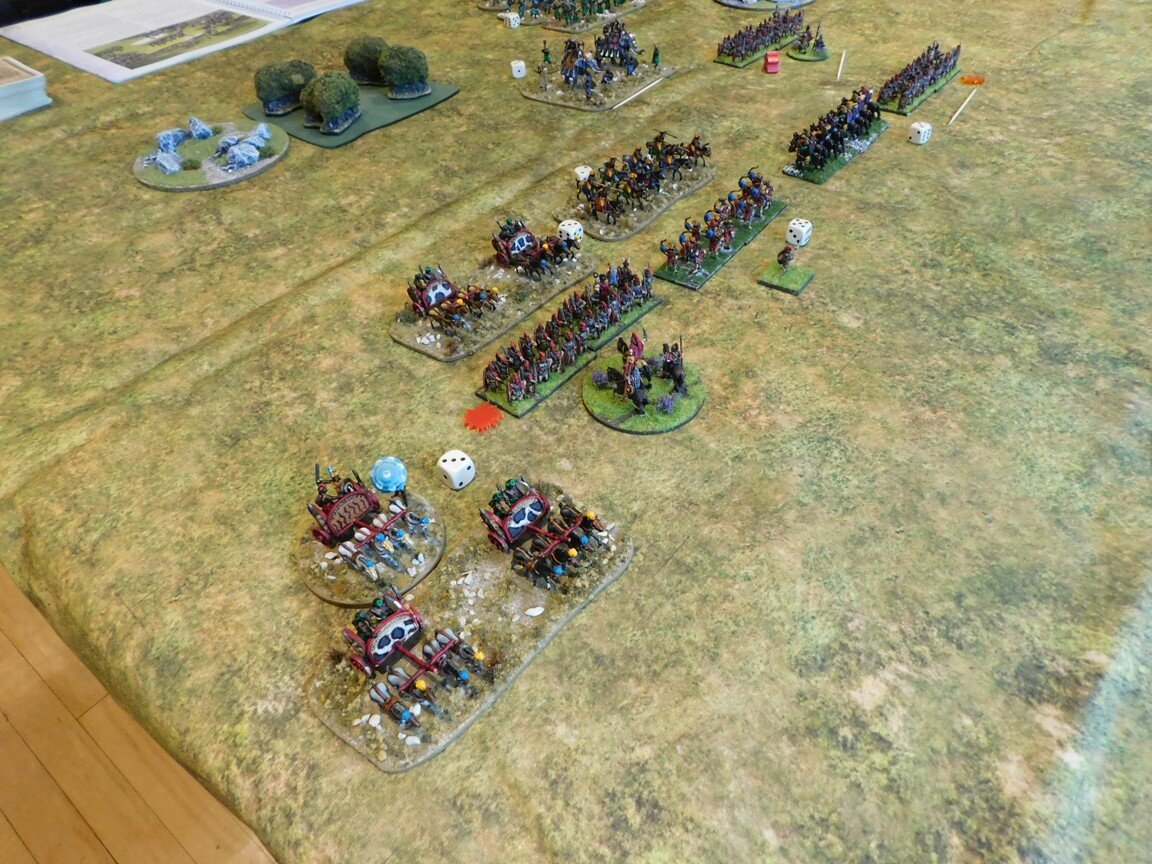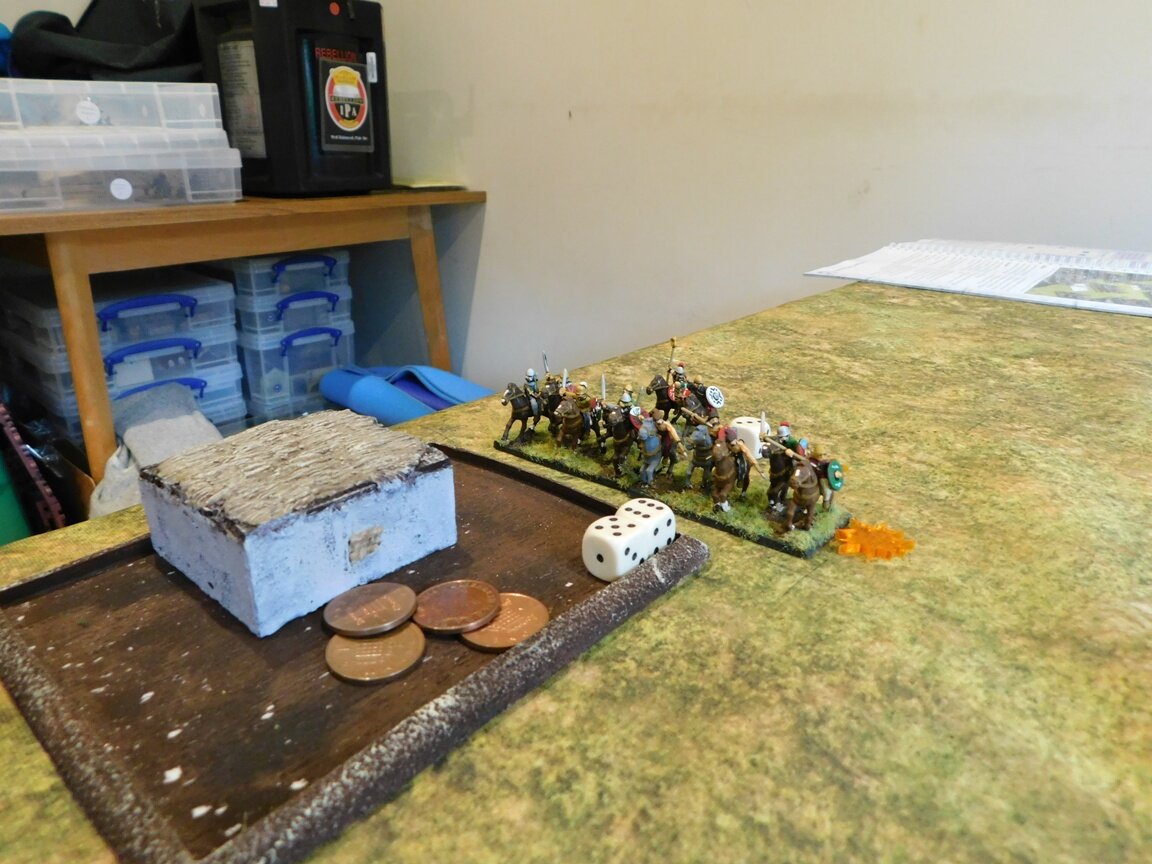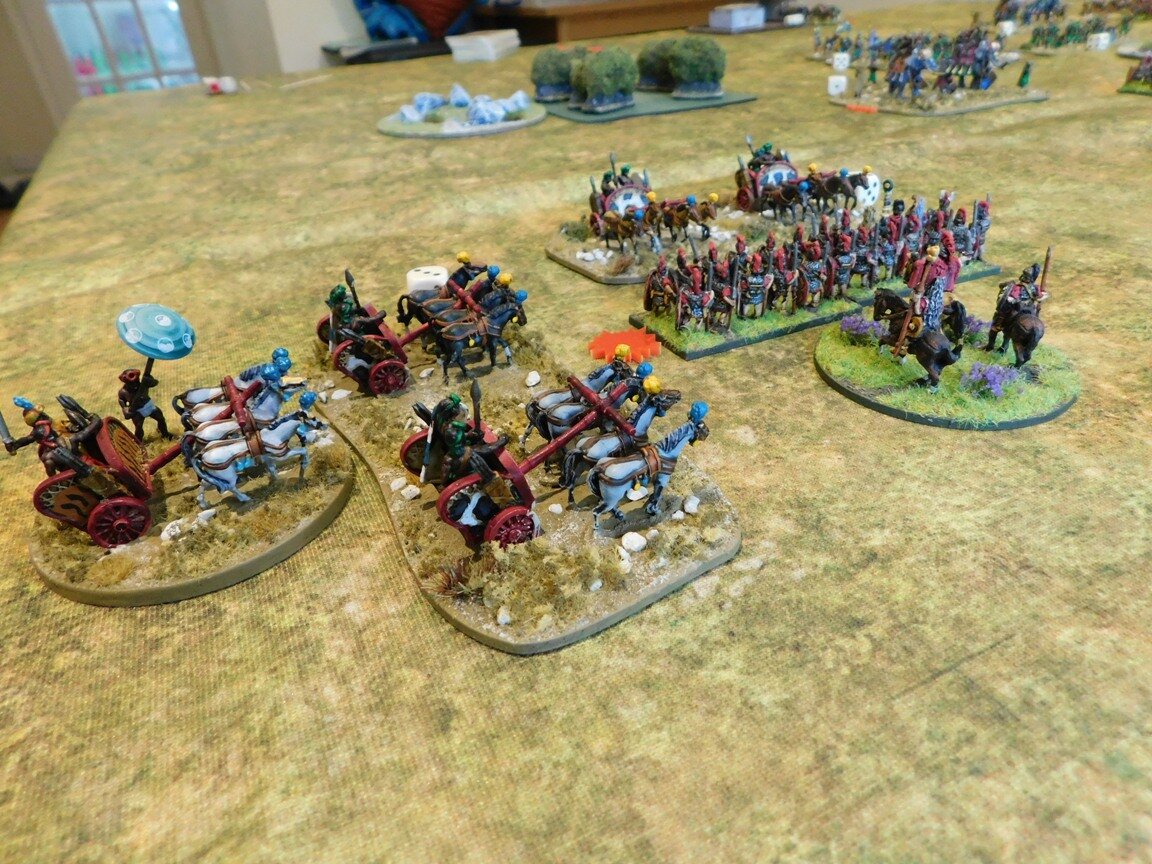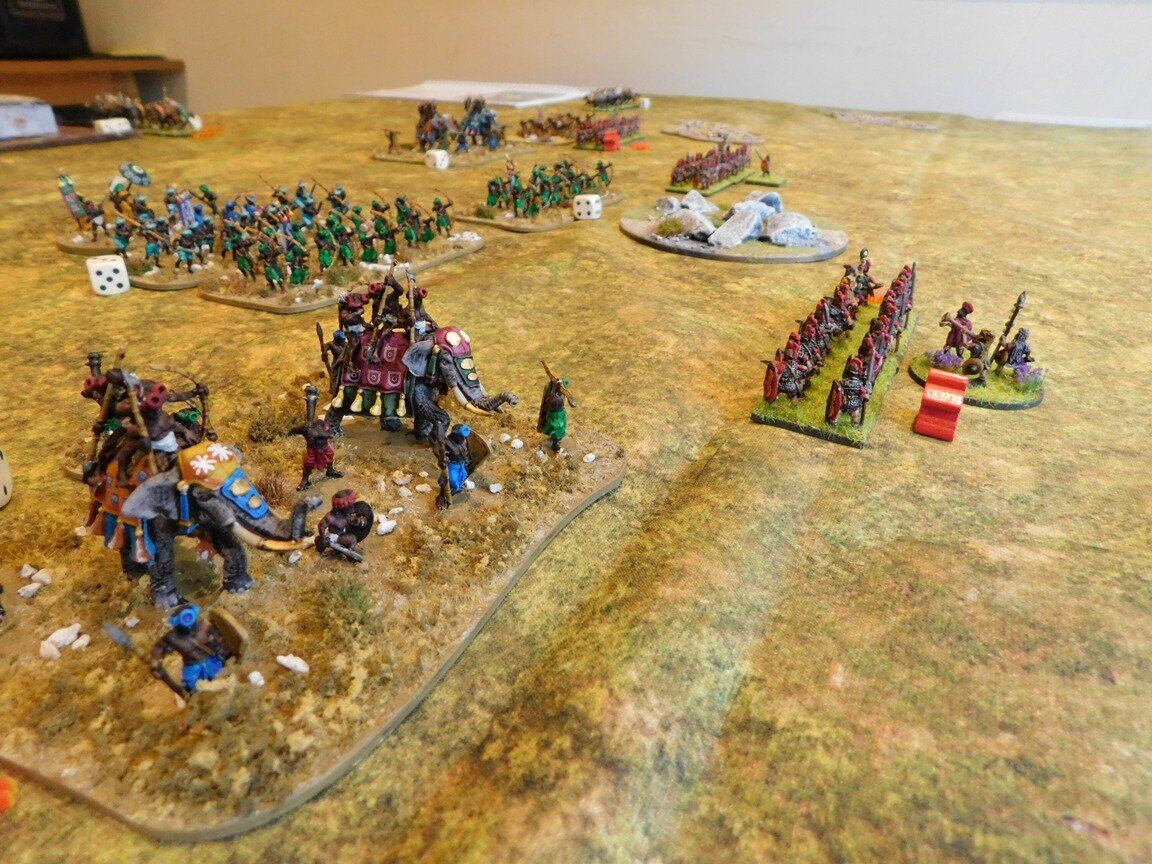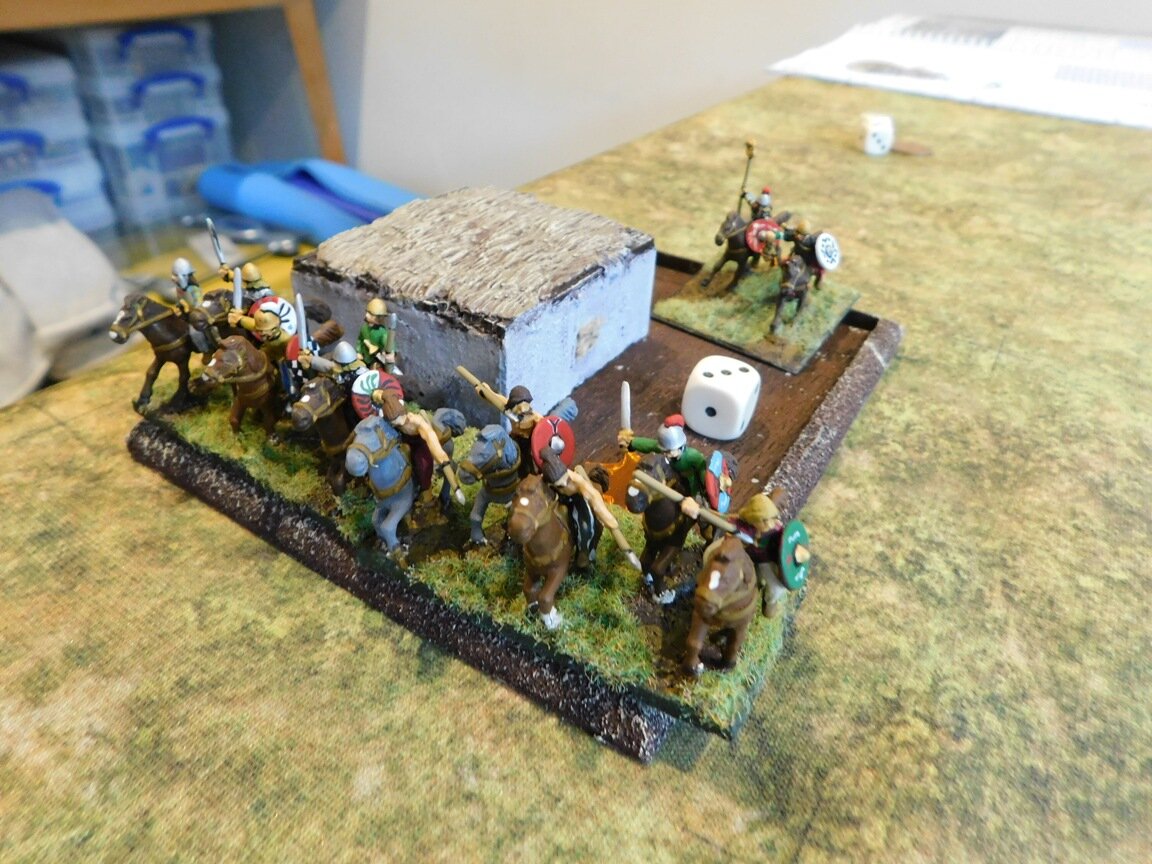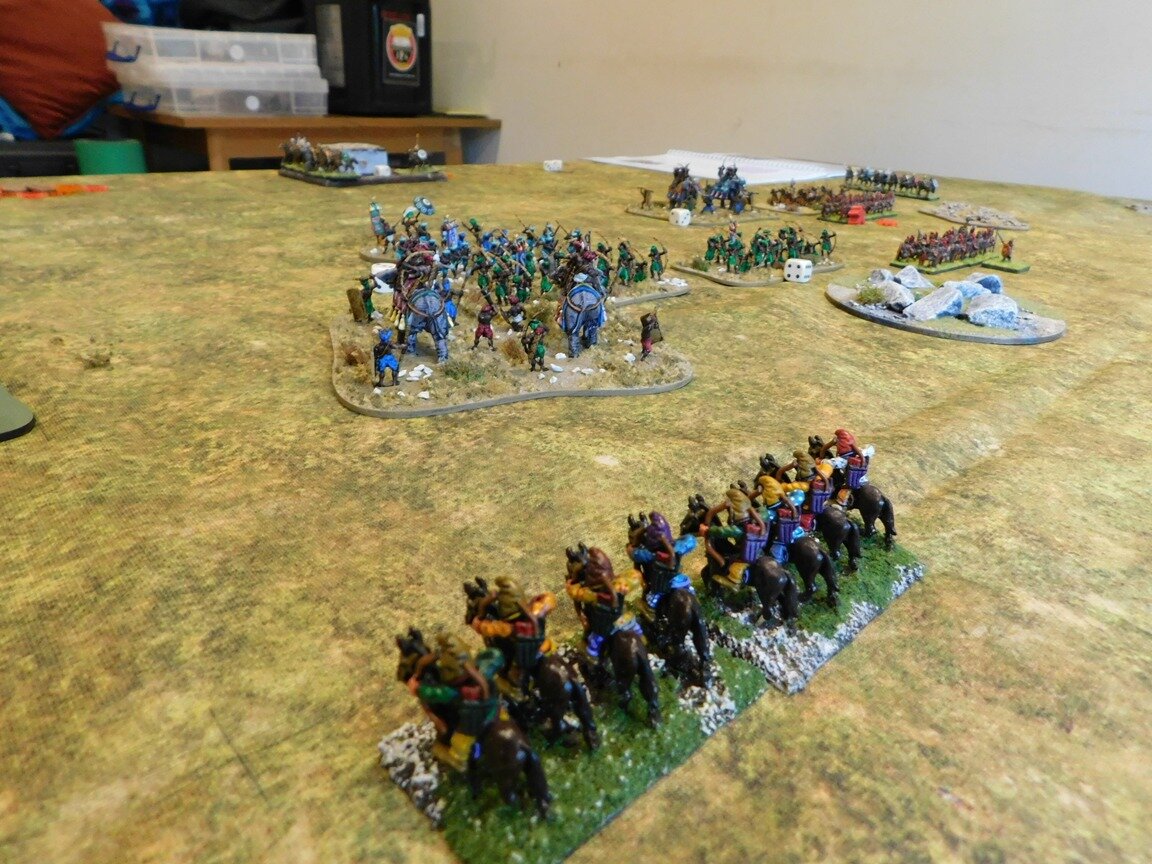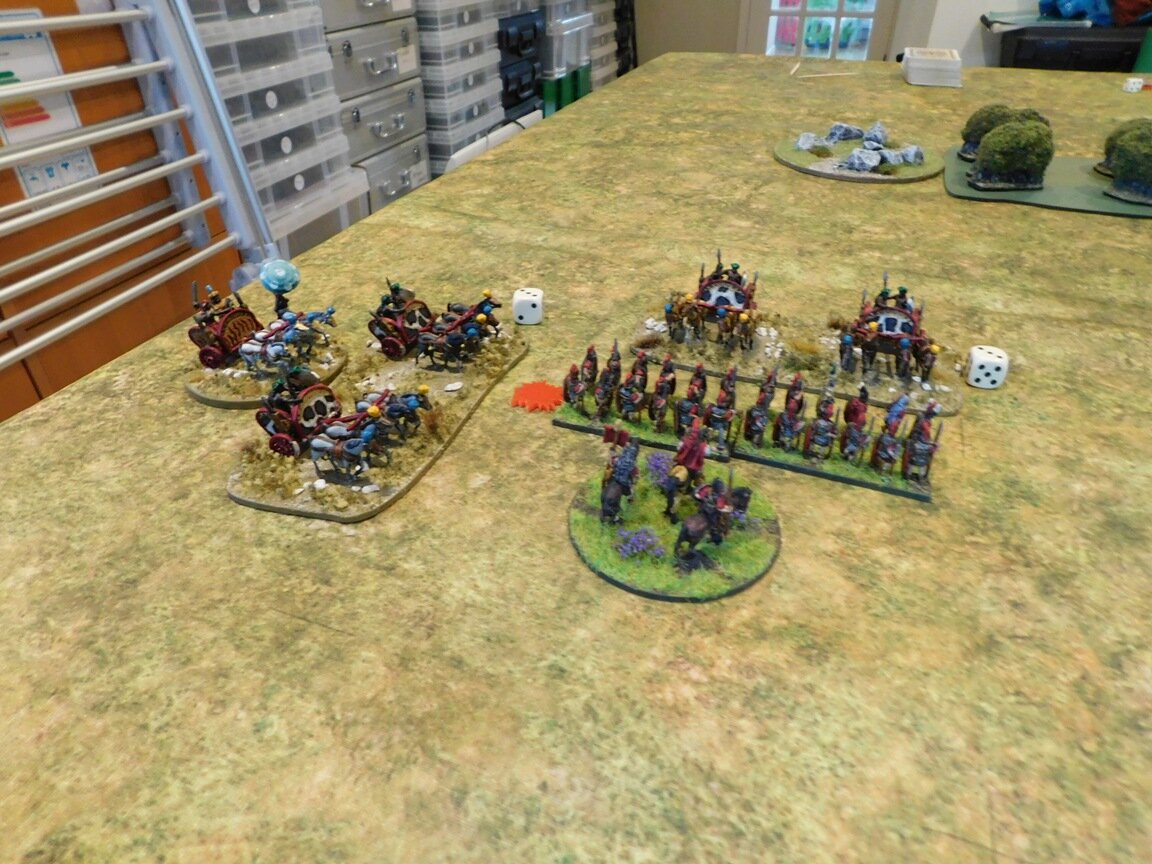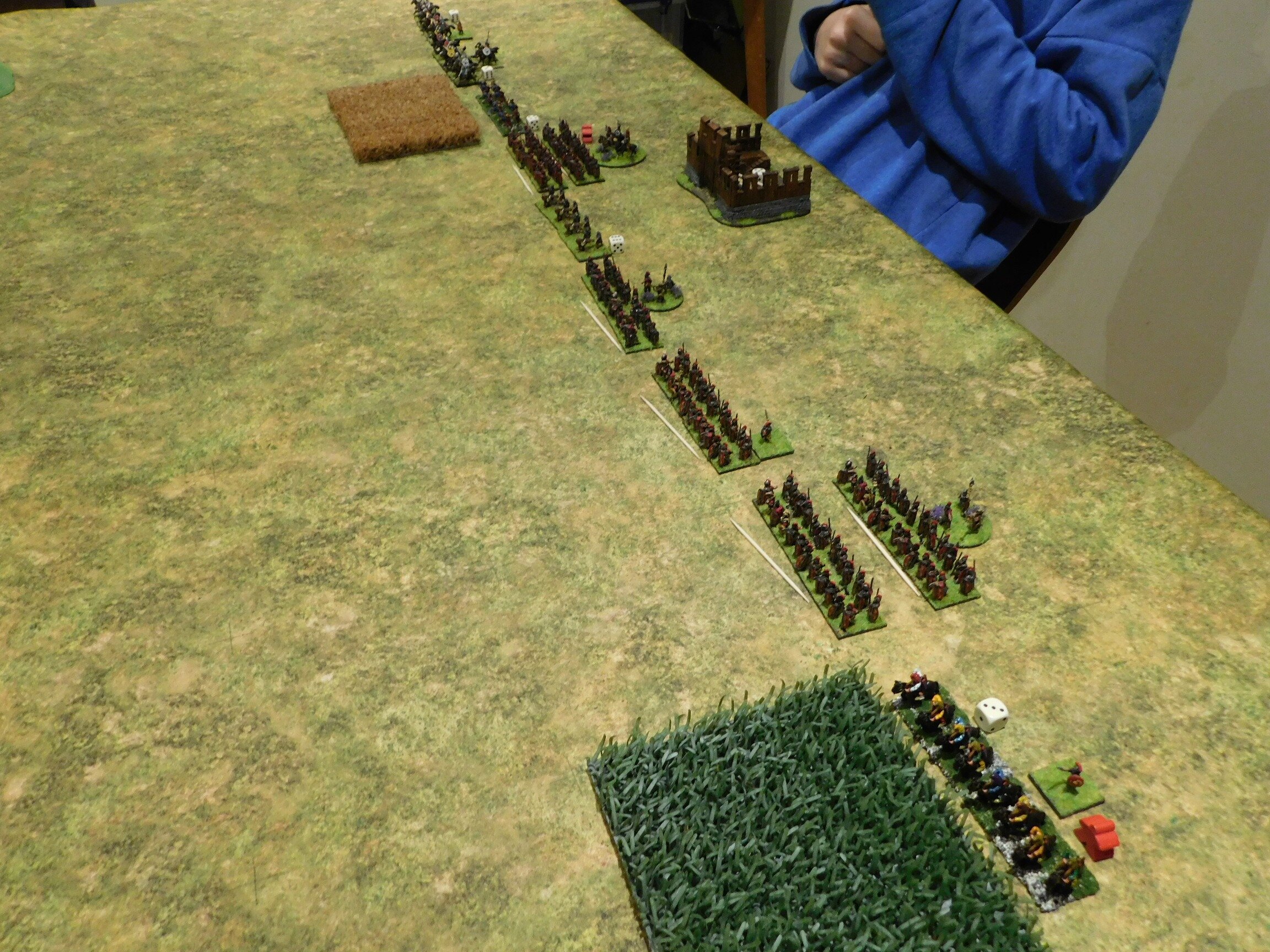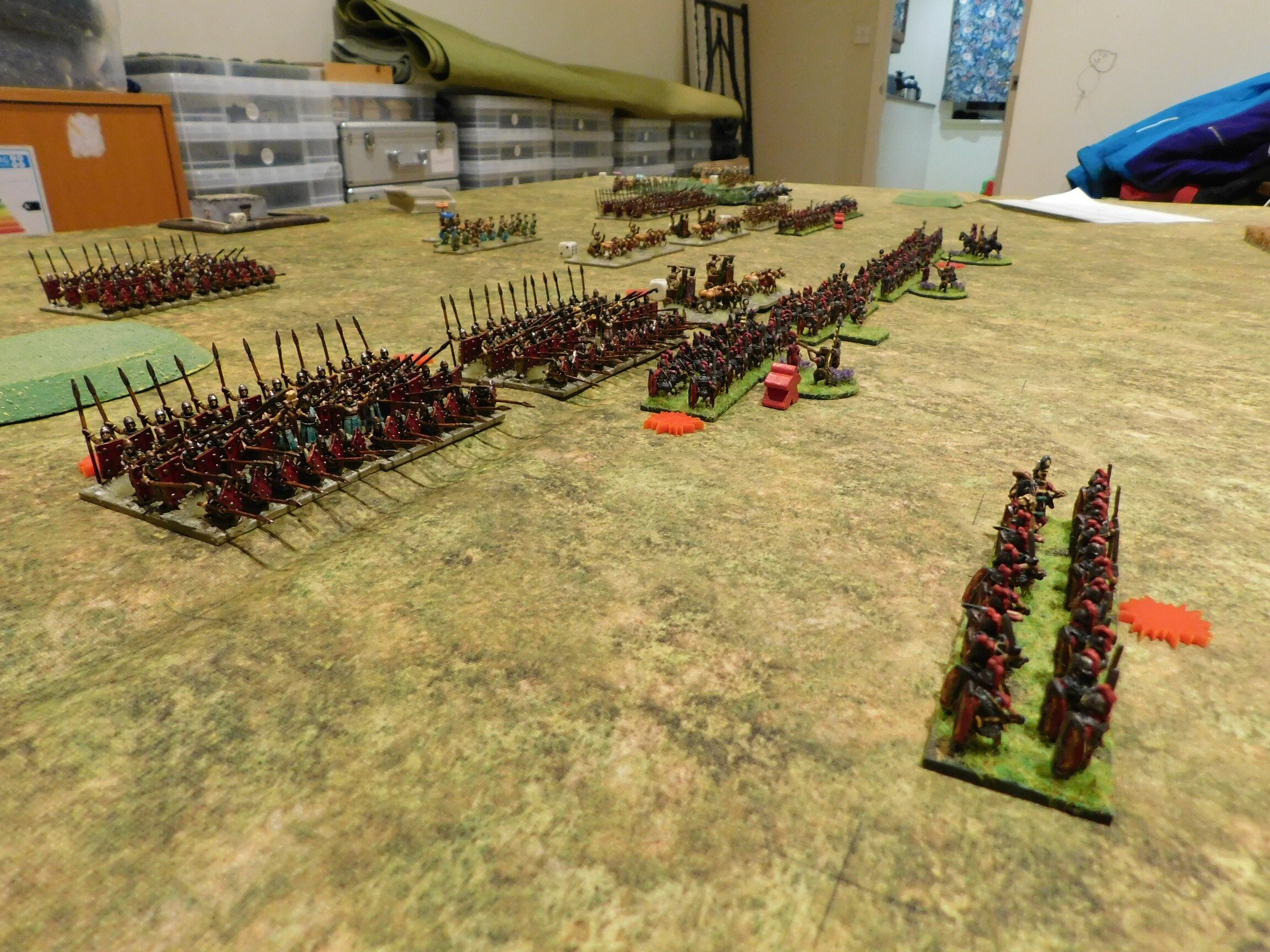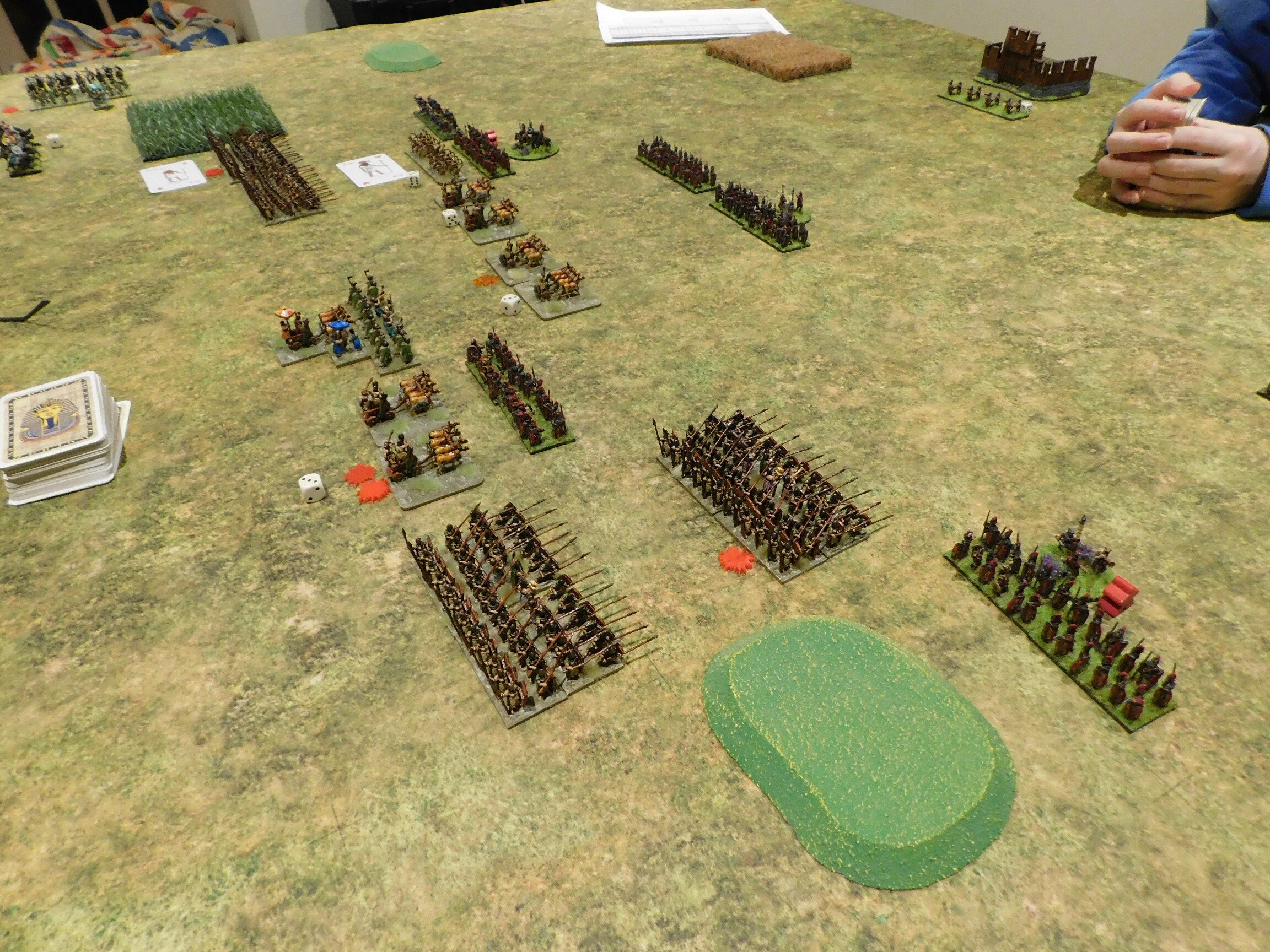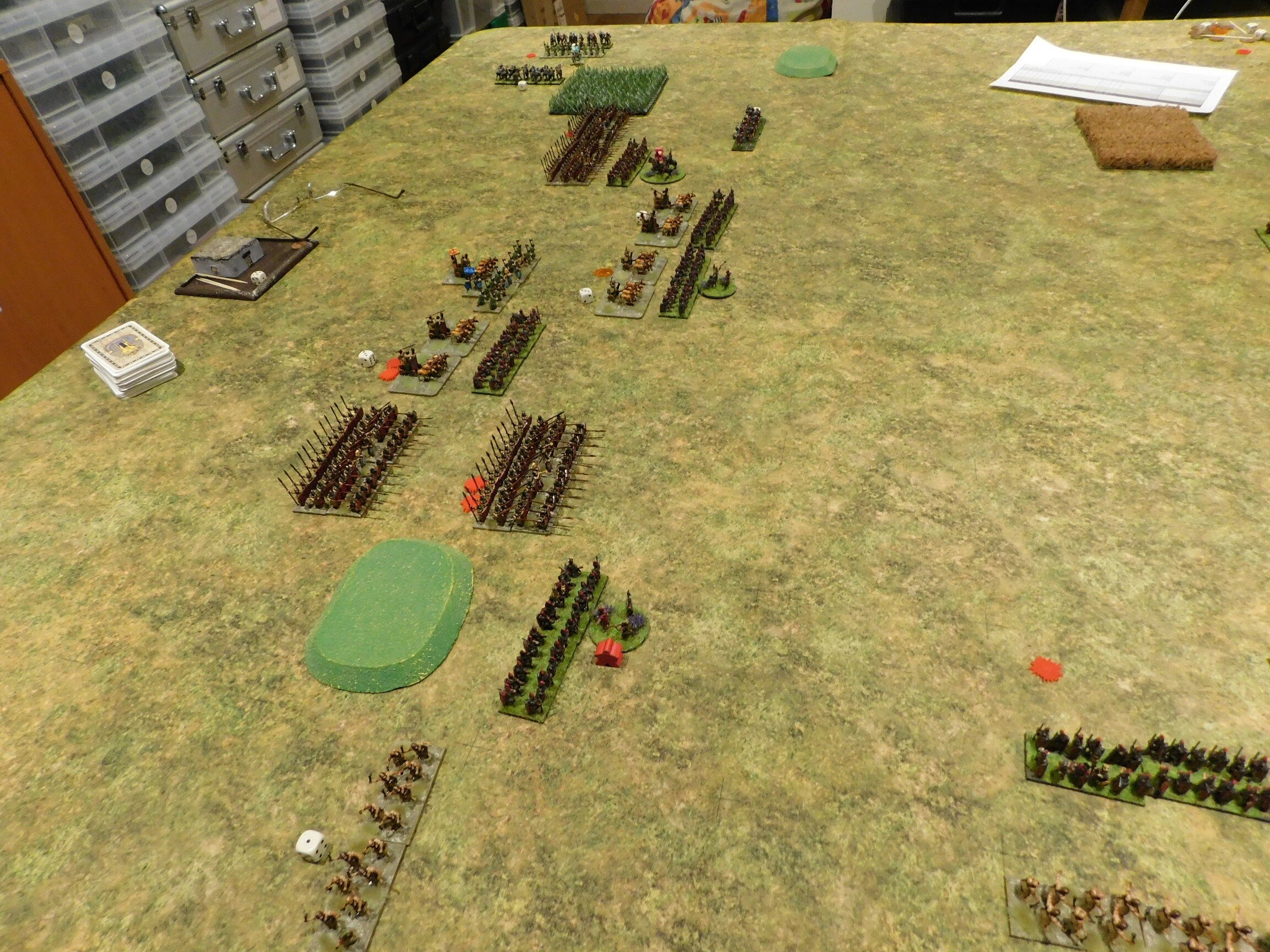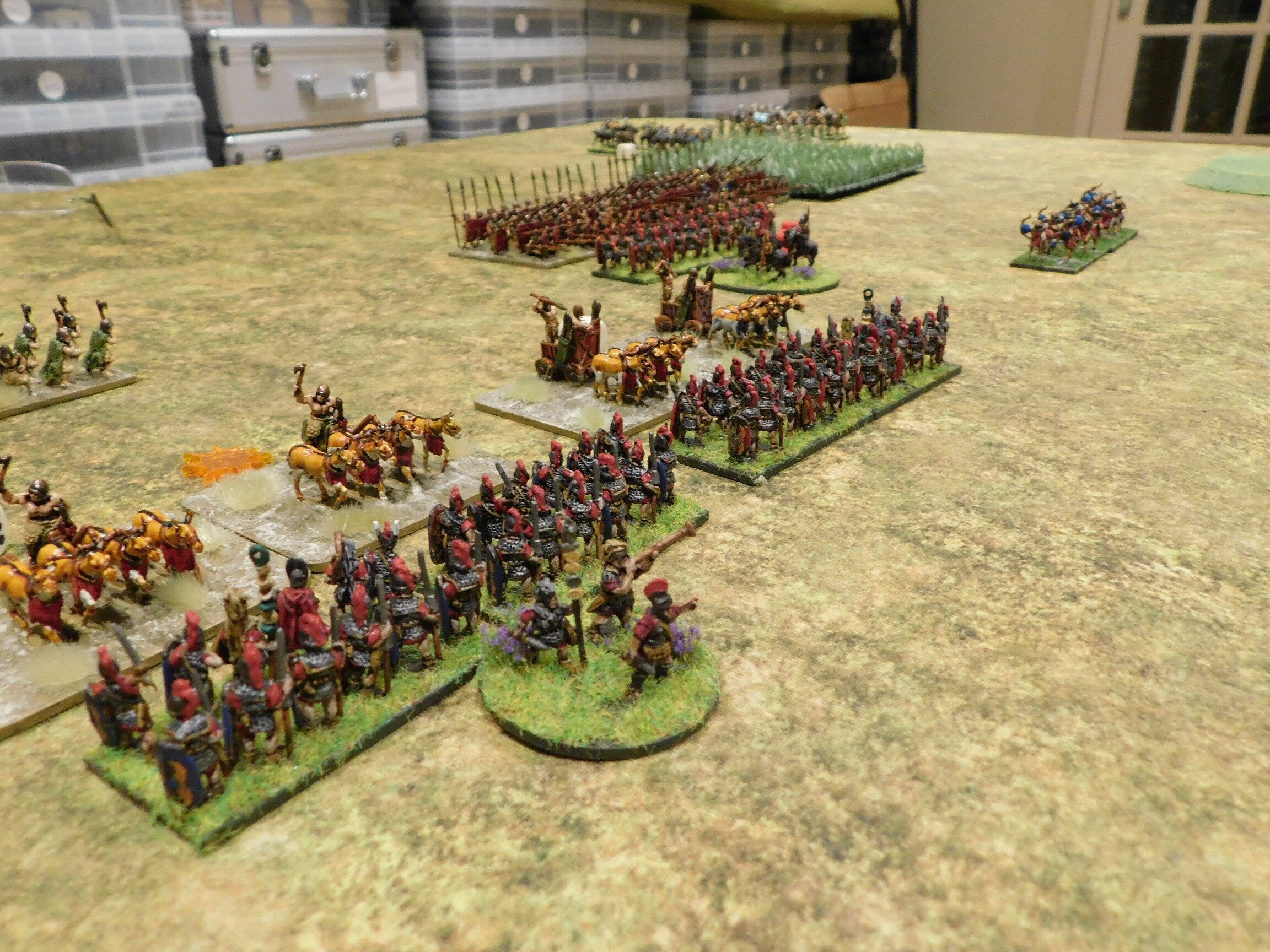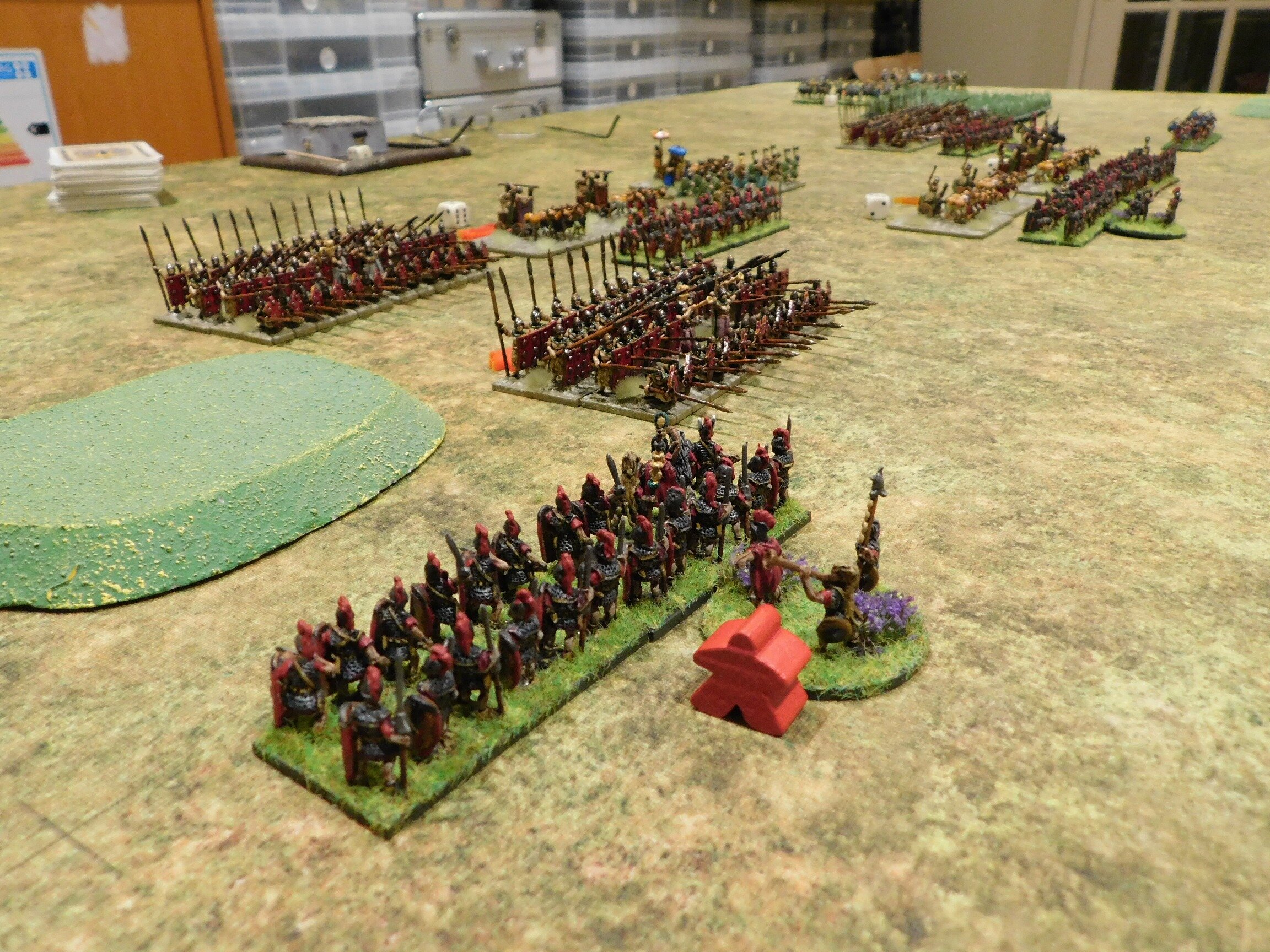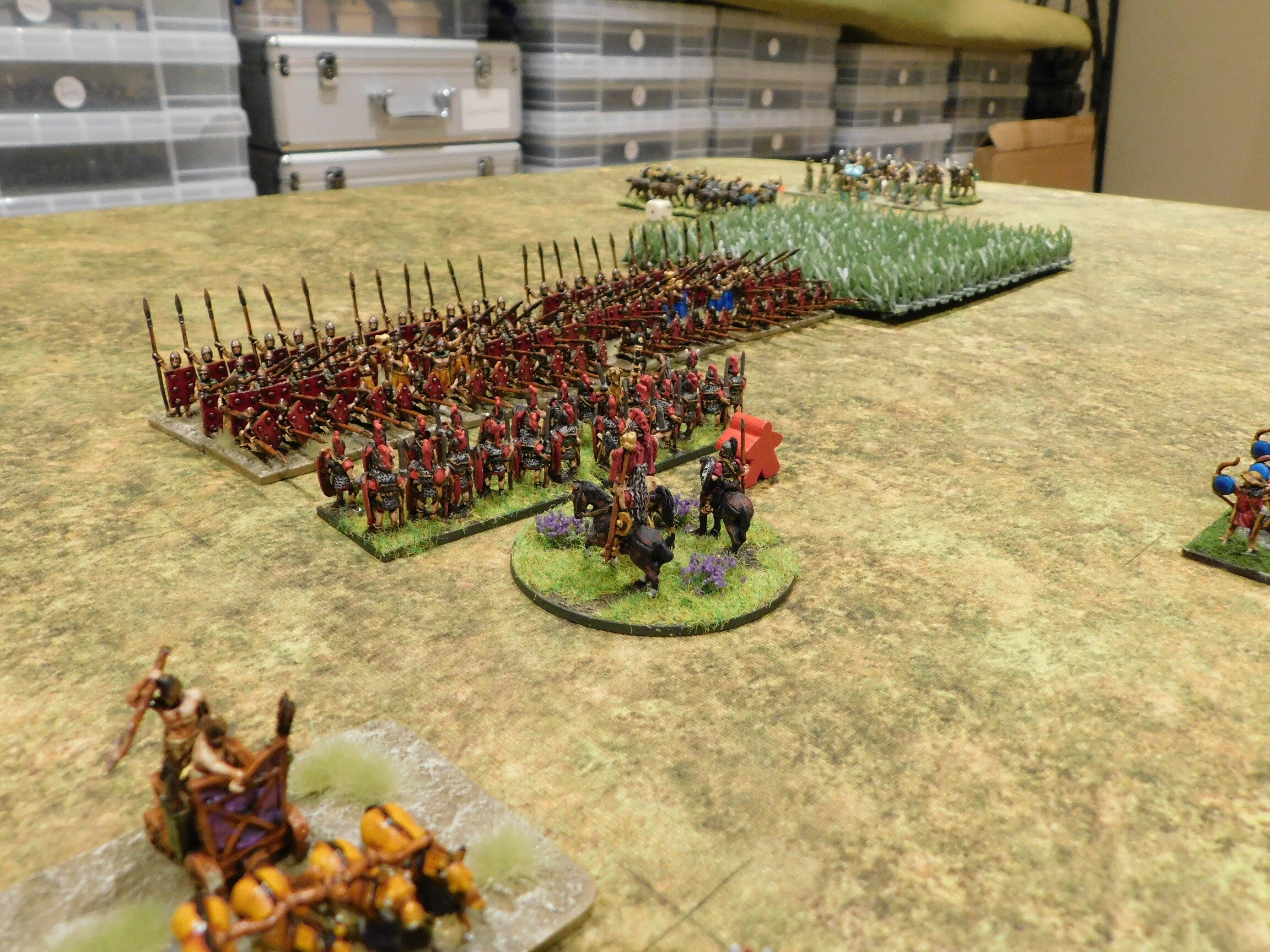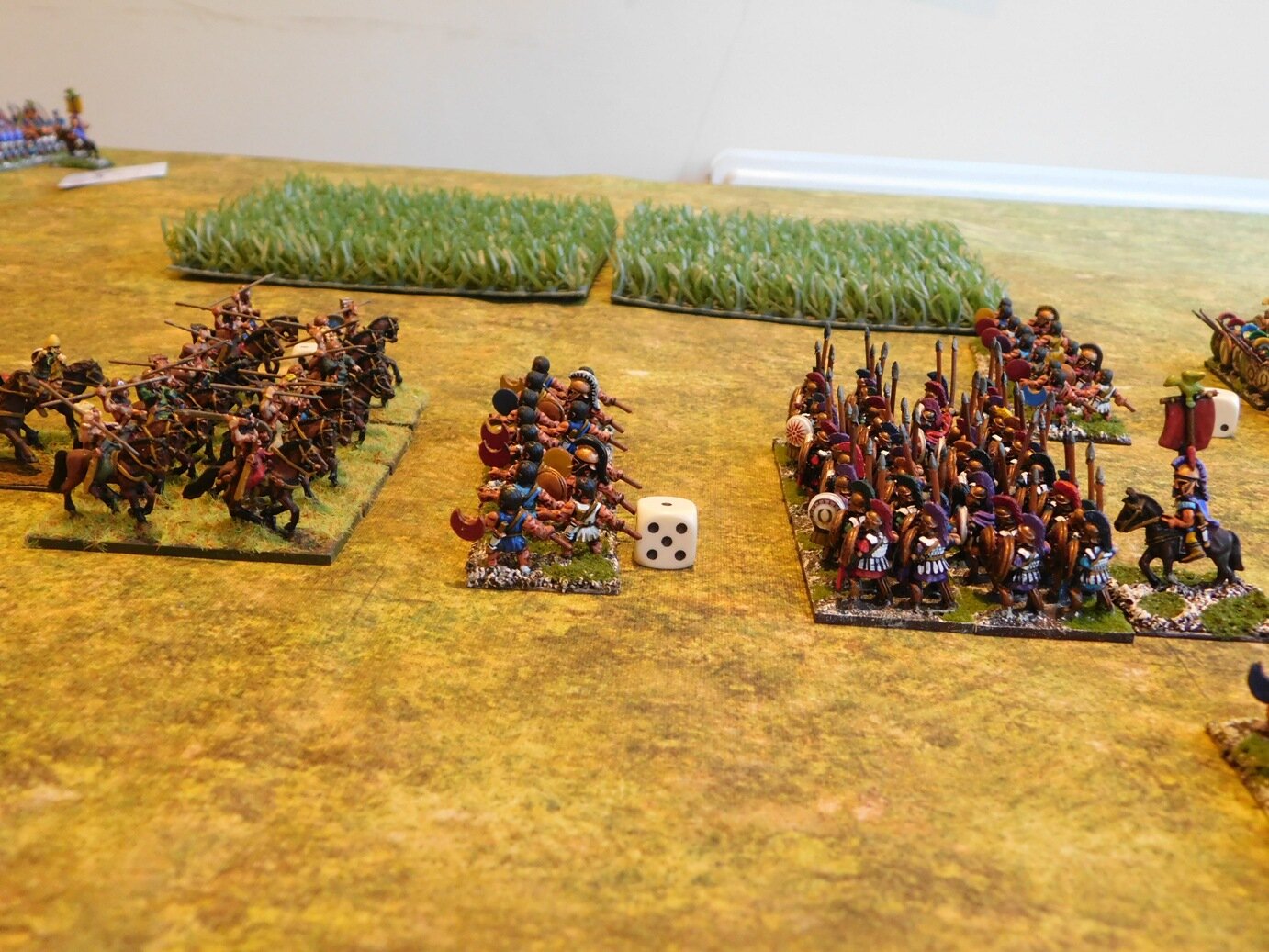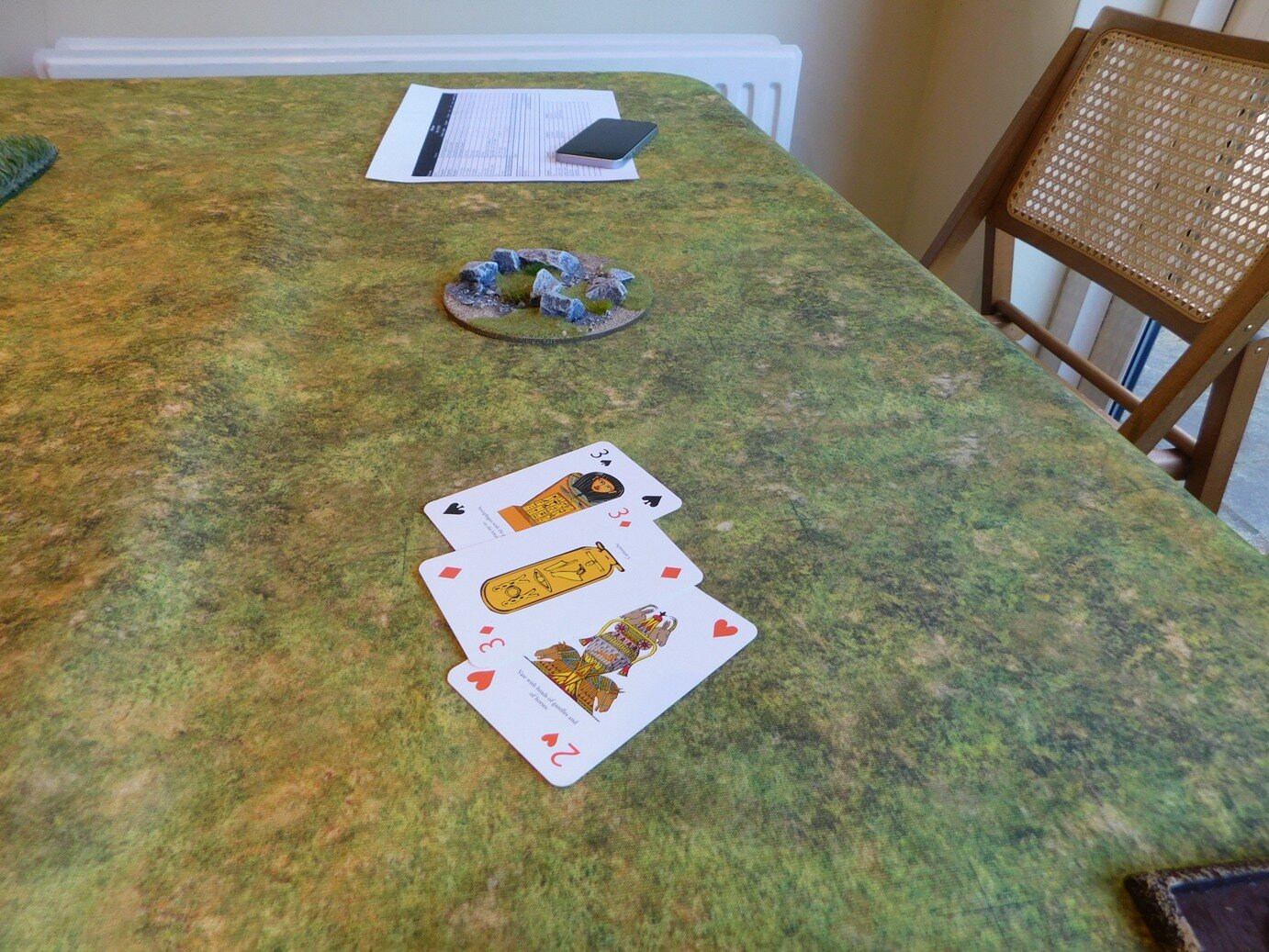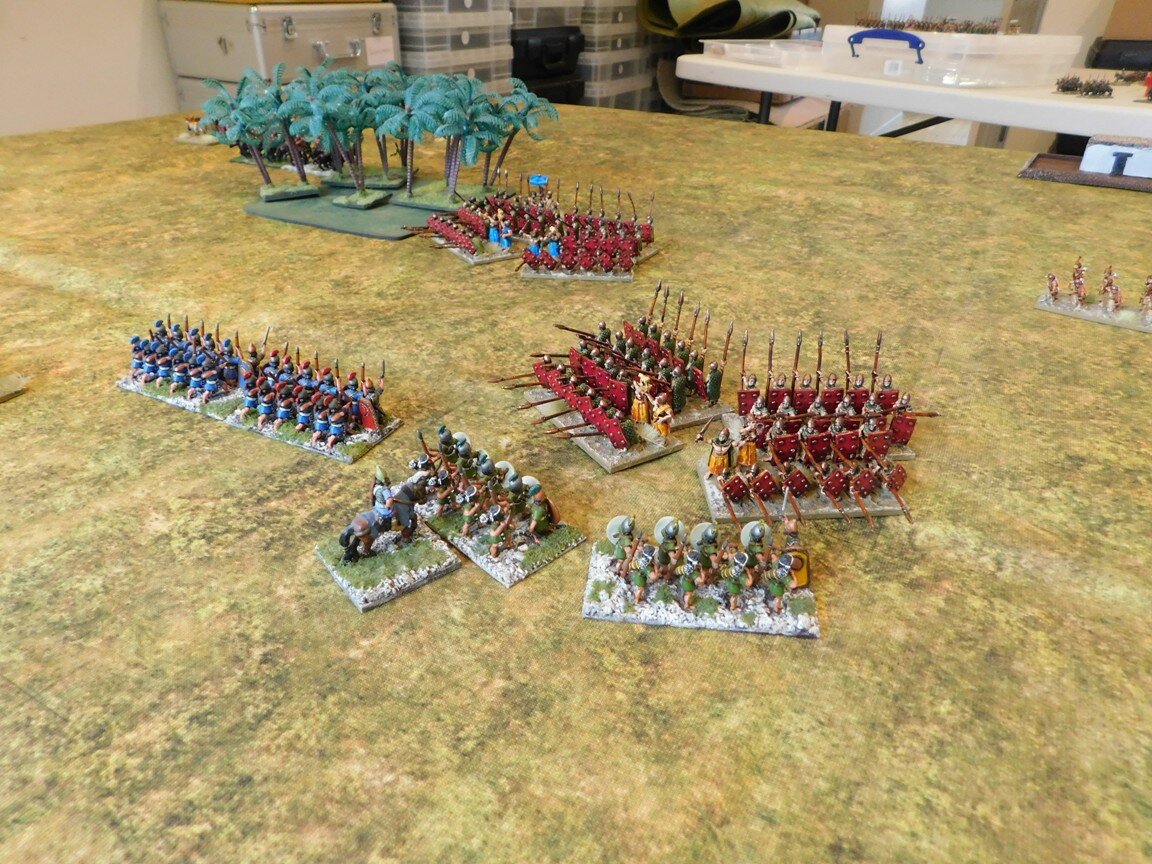Classical Indians vs the Greeks
/Restrictions lifted on Sunday, first face-to-face game on Tuesday!
My Classical Indians would face off against a Hoplite Greek army fielded by Bevan…and what a Hoplite Greek army it was: ten units of Hoplites and one of light infantry. The rules used were To The Strongest, a grid-based game, so with my table being twelve squares wide, Bevan could form a space-invader like line of hoplite units and just advance forward, spearpoints out!
So many hoplites that I had to draft in some Summerians as proxies!
On the other side of the battlefield, my Classical Indians consisted of five units of longbowmen as the softening-up element, with a hard core of two escorted elephant units and two heavy chariot units as the “finishers”. Reserves were provided by the Maiden Guard.
Maiden Guards, Elephants, Longbowmen
The Game
As predicted, the Greeks deployed in a largely straight line and spent the early stages of the battle manoeuvring around the patches of scrub and palm trees in order to keep their frontage solid as they came into longbow range.
opening stages
At one stage it did look as if the cards had opened up a couple of holes in the hoplite line and, given a little more lateral space and luck, I could perhaps have got one of my heavy chariot units through a gap and into his rear, but Bevan just managed to block my path on both occasions.
I really wanted to get through that gap!
Finally the Greeks (and pseudo-Greeks!) arrived into longbow range, and my men opened fire. I was determined not to end the game with a camp-full of spare ammunition, so shot for all I was worth.
The Greeks staggered slightly, but came on. There were so many enemy units in an unbroken line that I couldn’t concentrate my fire, so although I could disorder or even double-disorder half his unit, I couldn’t quite break any.
The View from the Other Side
It was time to commit my melee troops, so forward trundled the elephants and chariots, wherever possible aiming at already-disordered enemy units.
Helicopter Viewpoint
Unfortunately, things followed the same pattern again: I disordered or double-disordered the four units I hit, but couldn’t quite manage the break, apart from one raw hoplite unit that did flee the field…but this was soon, space-invader like, replaced by another.
Damage, of course, was being done to both sides, but my troops only had two hits each as opposed to his three. I lost a unit of elephants (to what looked like the Spartans, no less), evening things up again, and the battle became one enormous melee.
Bye bye Nellies!
My men (and maidens) resisted bravely for a couple of rounds, another unit of hoplites was destroyed by one of my chariot units, but the writing was on the wall: I hadn’t done enough damage in the missile-fire stages of the game to win the grinding melee that followed.
I started steadily losing units, victory coins and eventually, the battle itself.
Aftermath
The game was actually a lot closer than the above implies. At one stage, I did actually manage to break his line with some chariots and had two more of his hoplite units on double-disorder. Unfortunately, the chariots couldn’t turn and get into the enemy rear in time, and I just couldn’t get the extra hit I needed to break the spearmen. I did use up all my spare ammunition though!
So a close run thing despite the apparent disparity in sides. My Classical Indians will lick their wounds and have another go in a few week’s time!
The far chariot unit has broken through, but too late to alter the outcome of the battle













